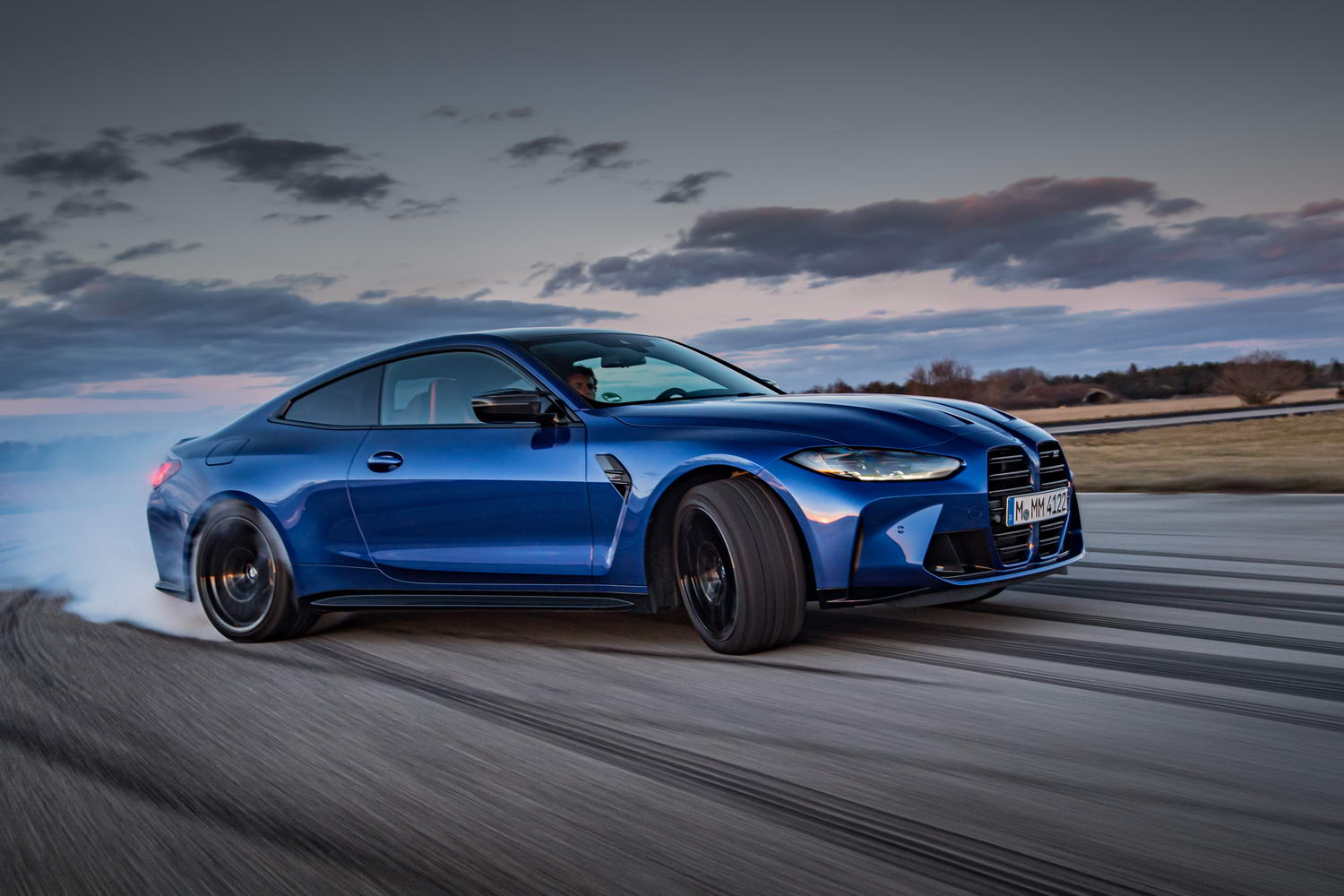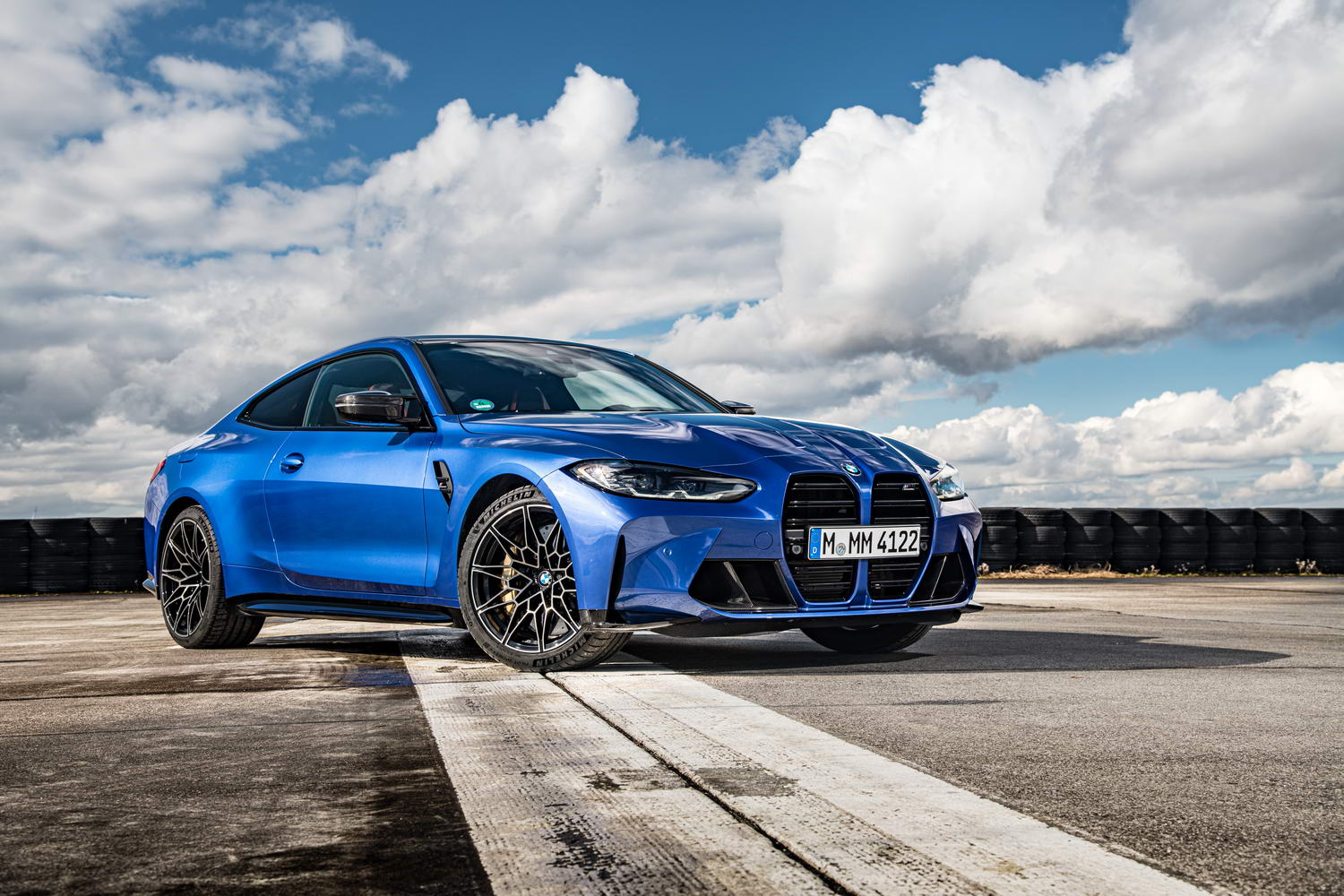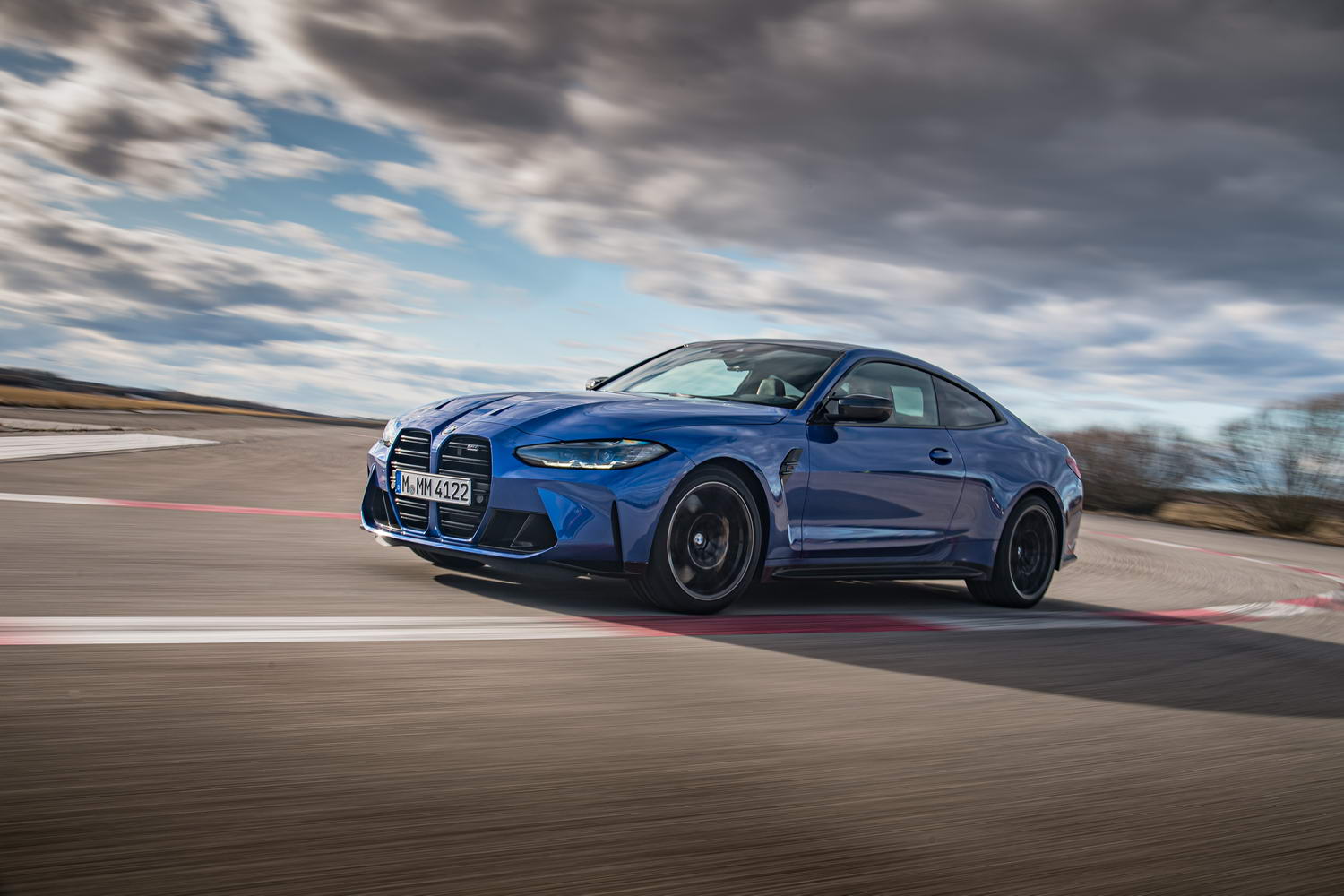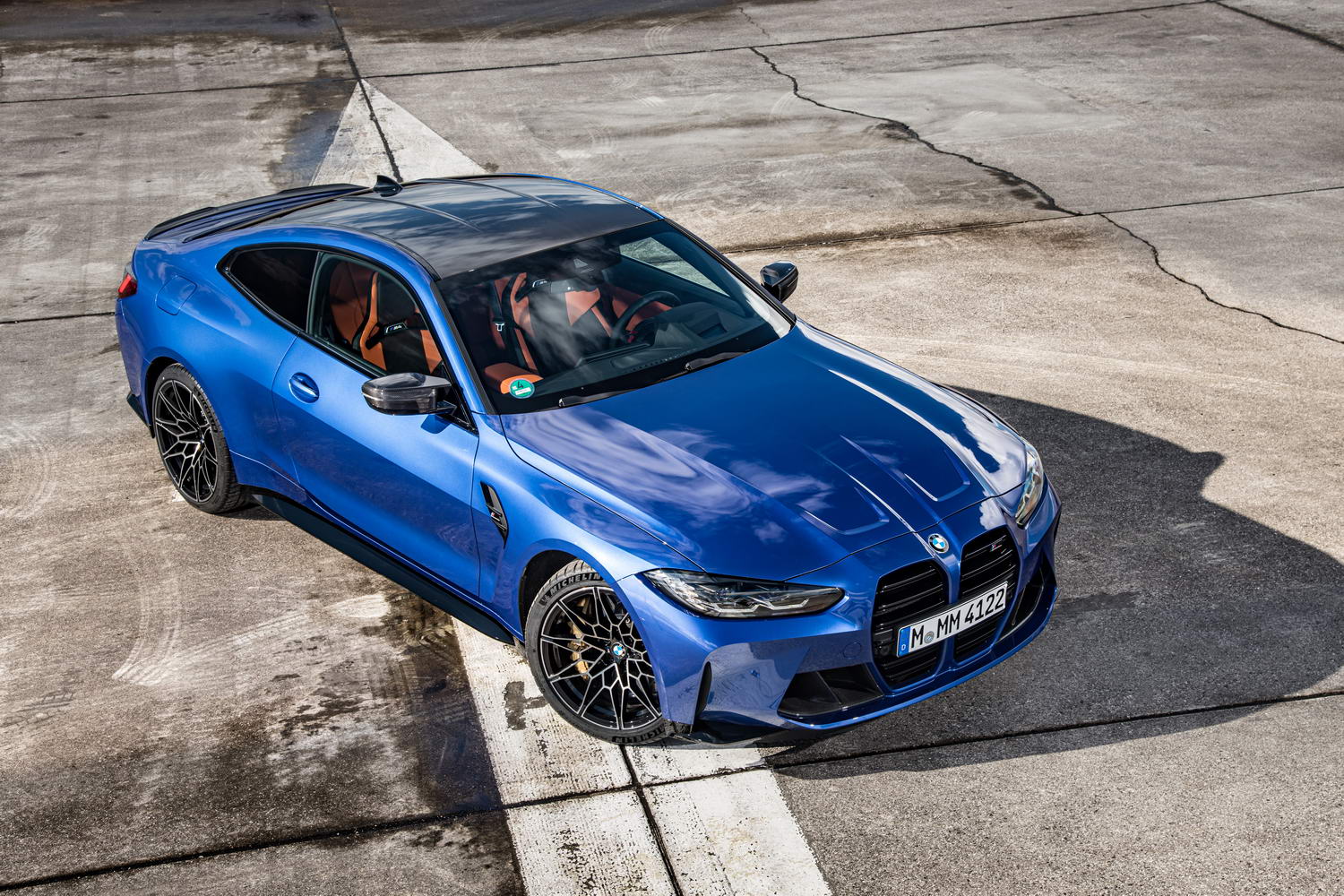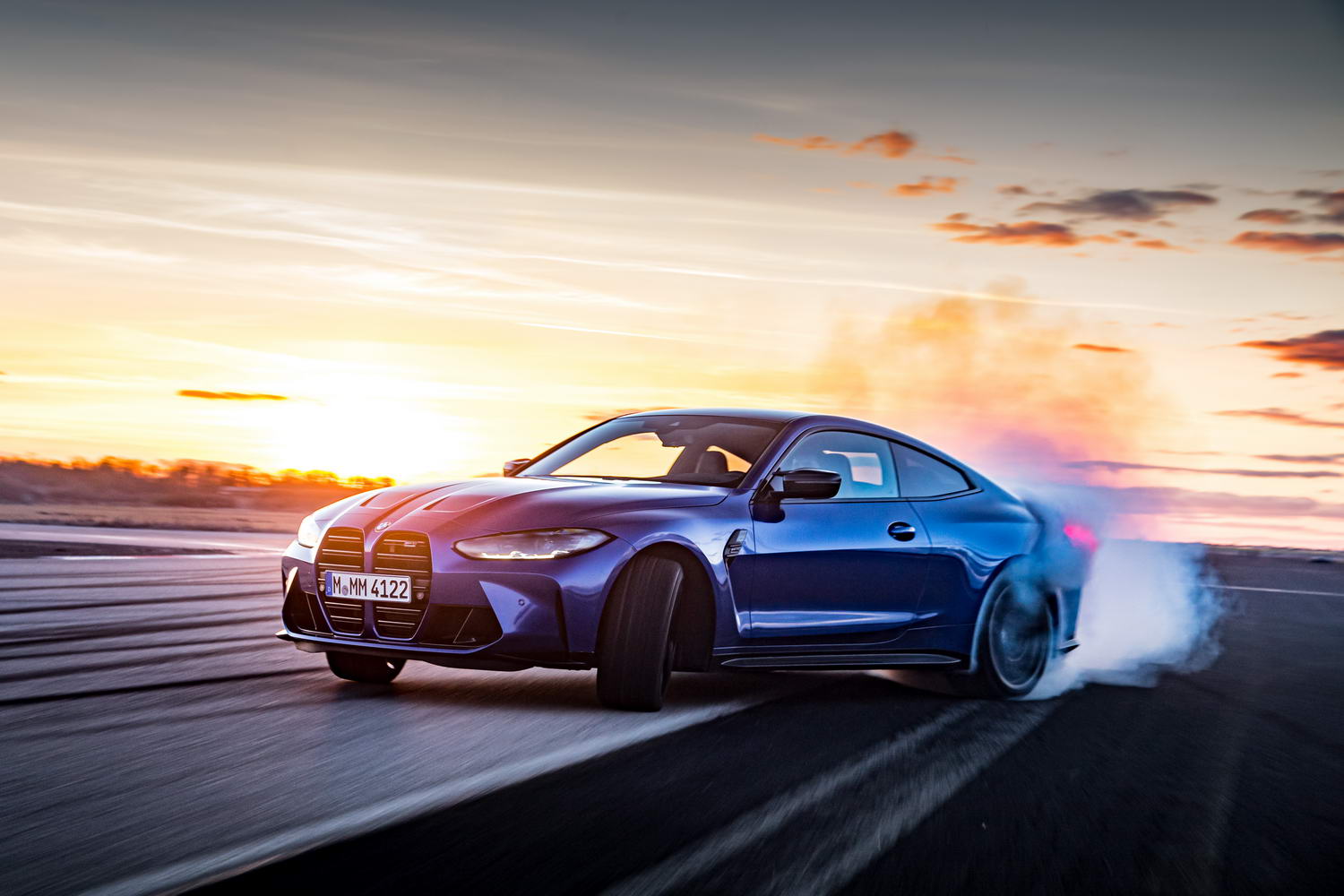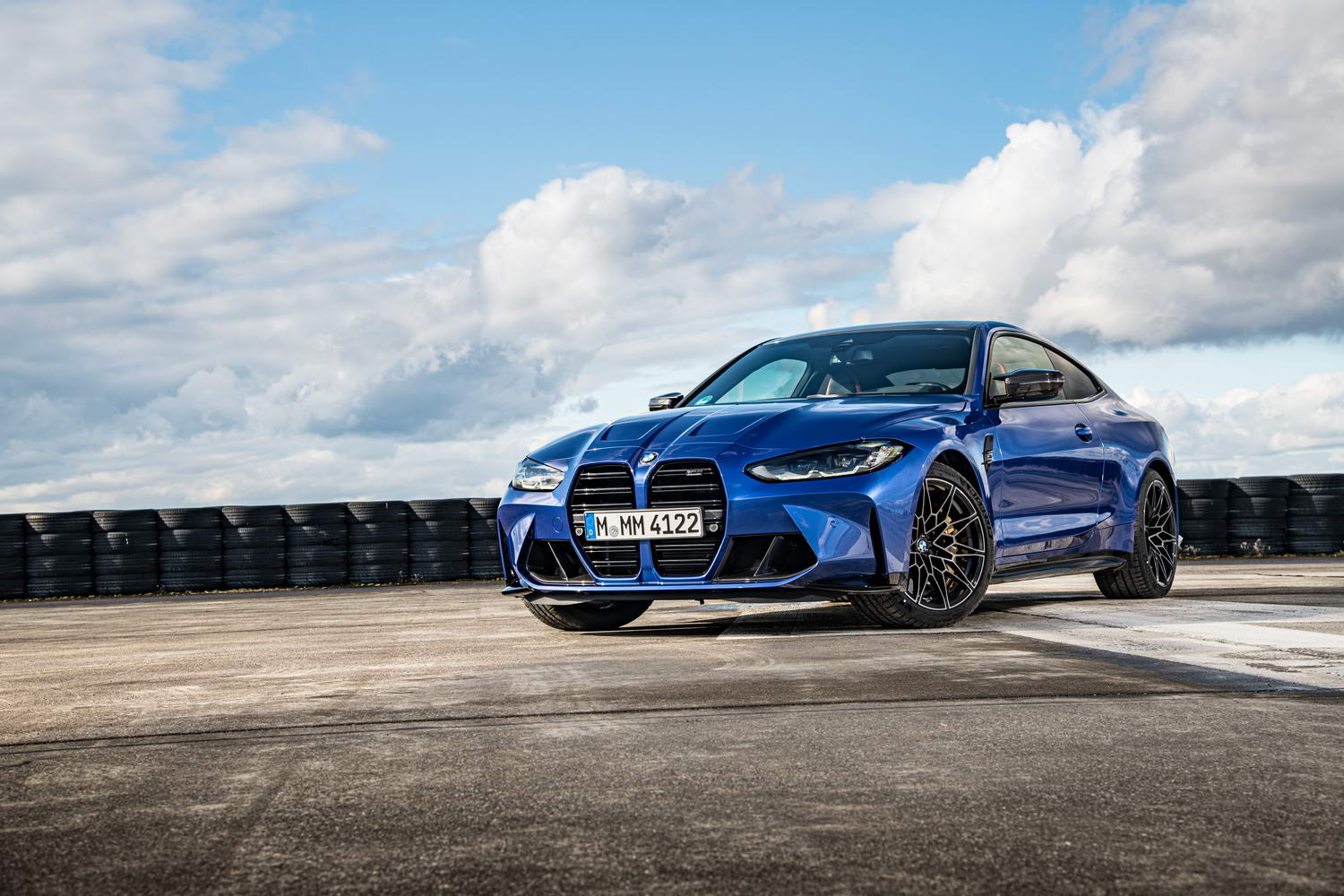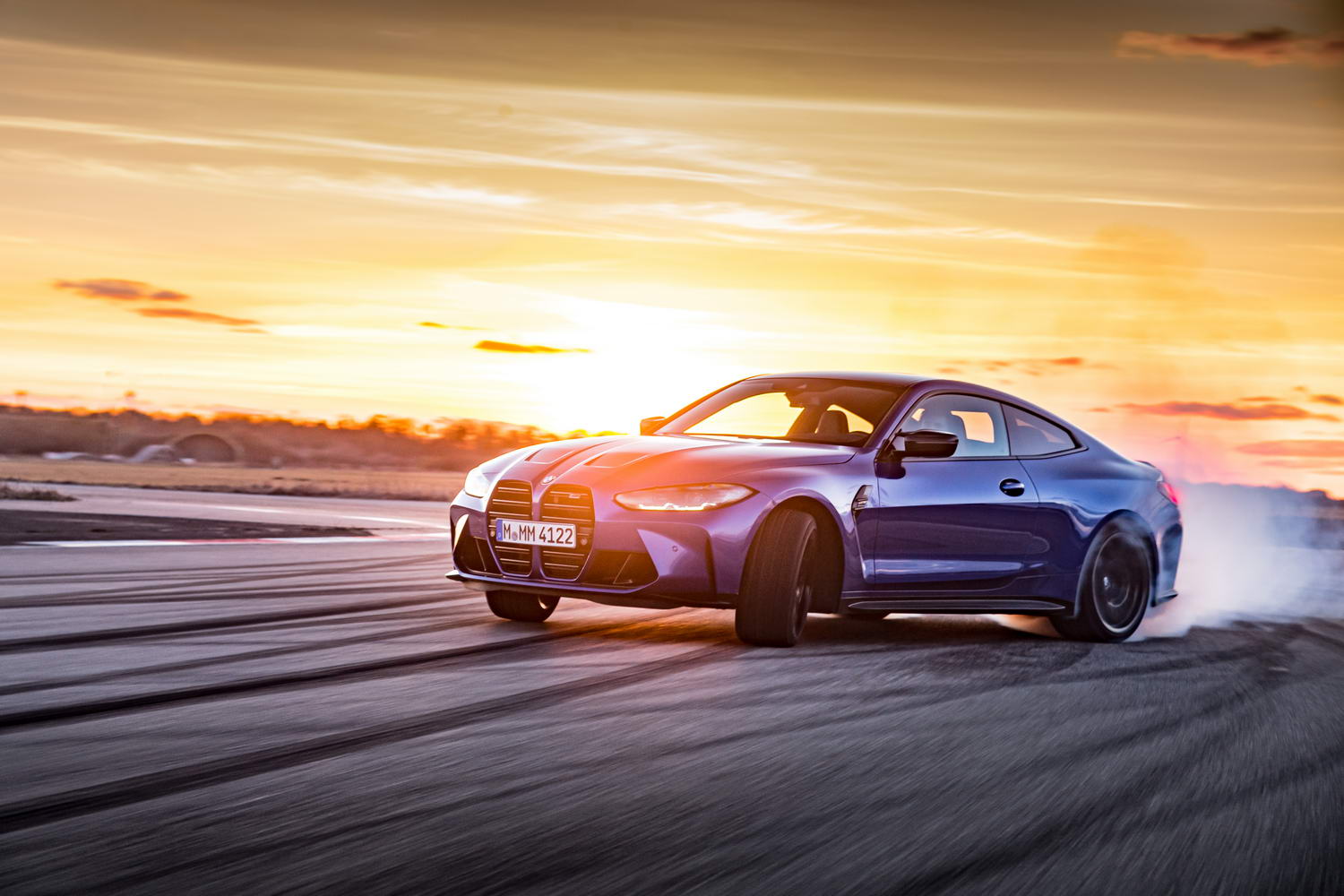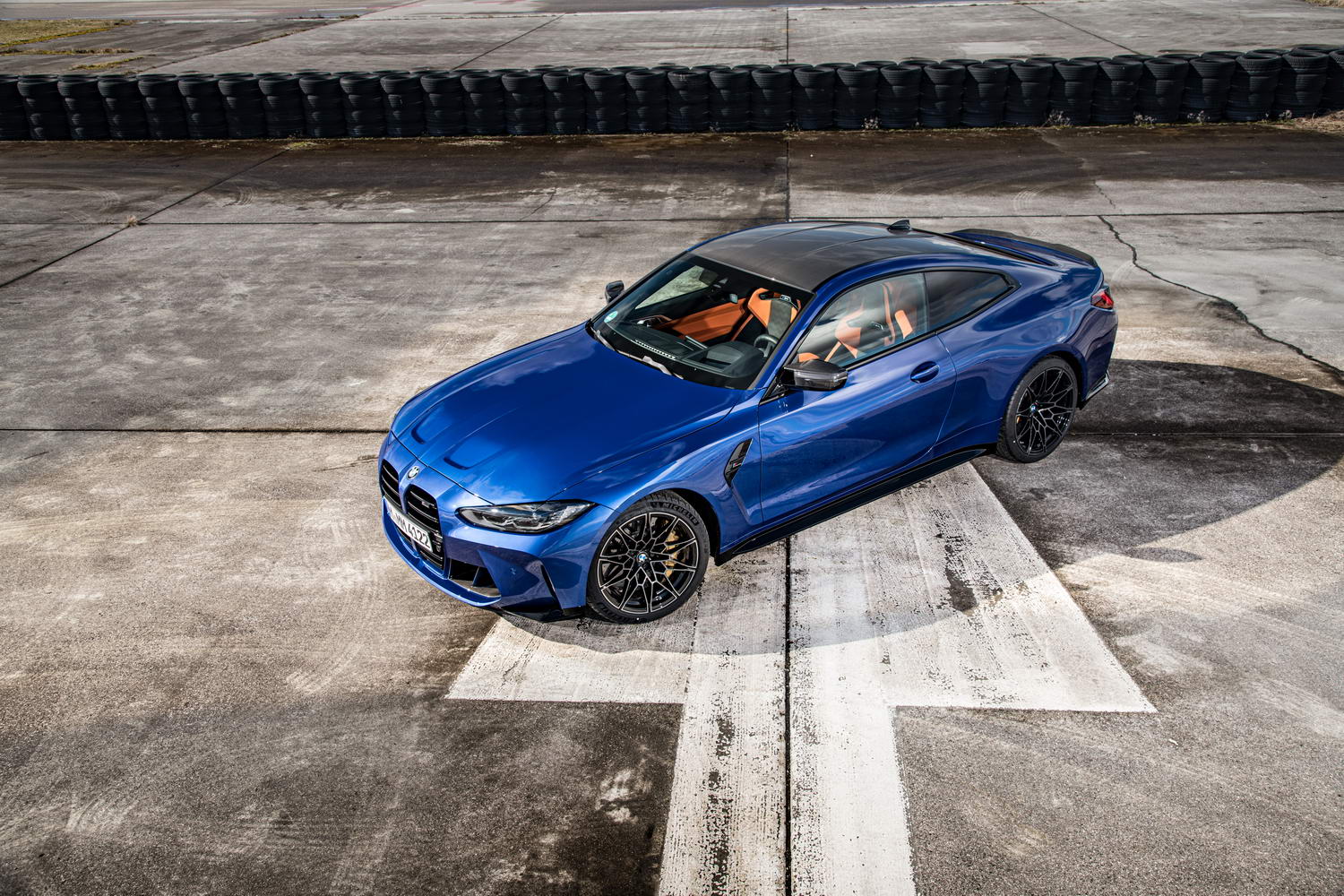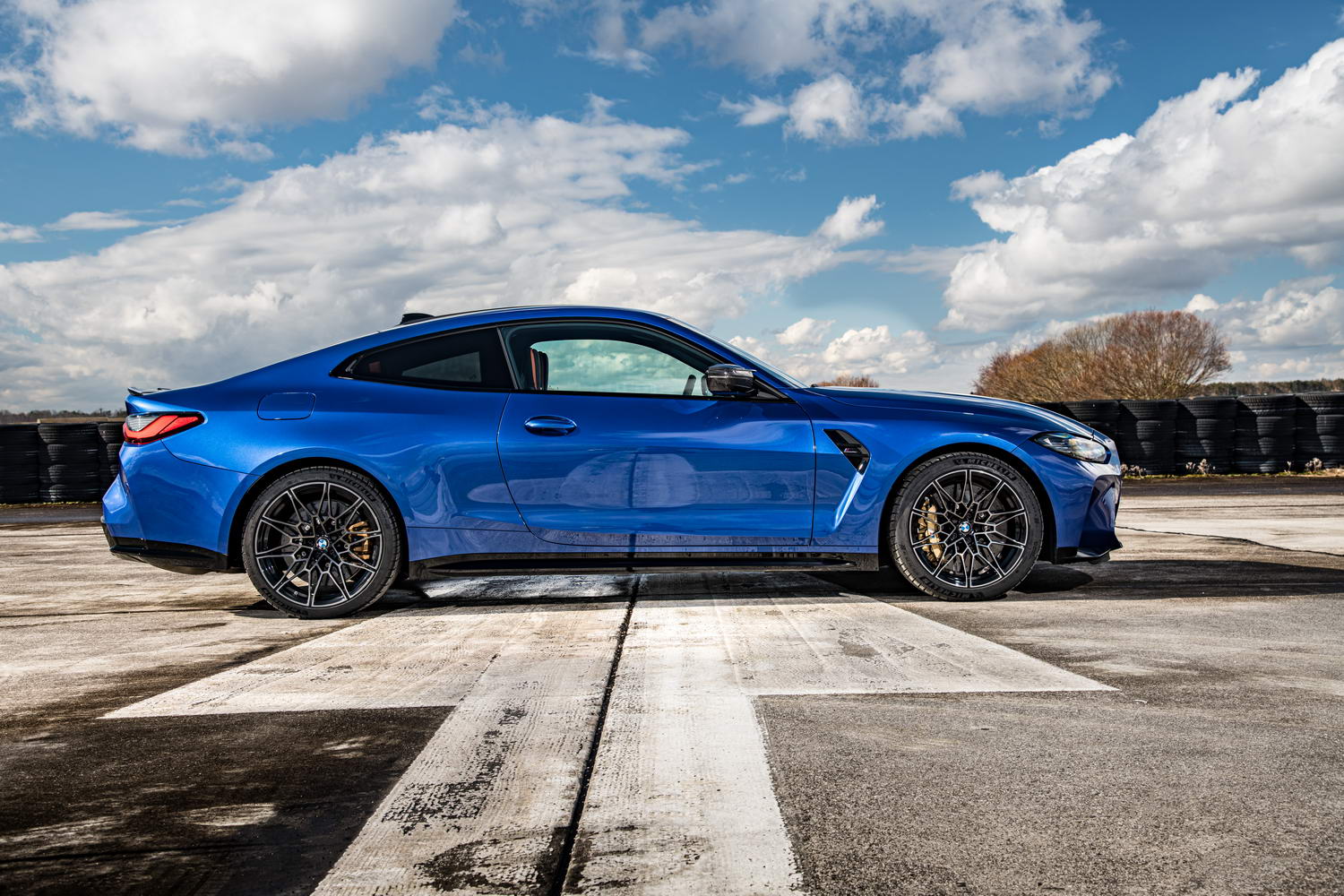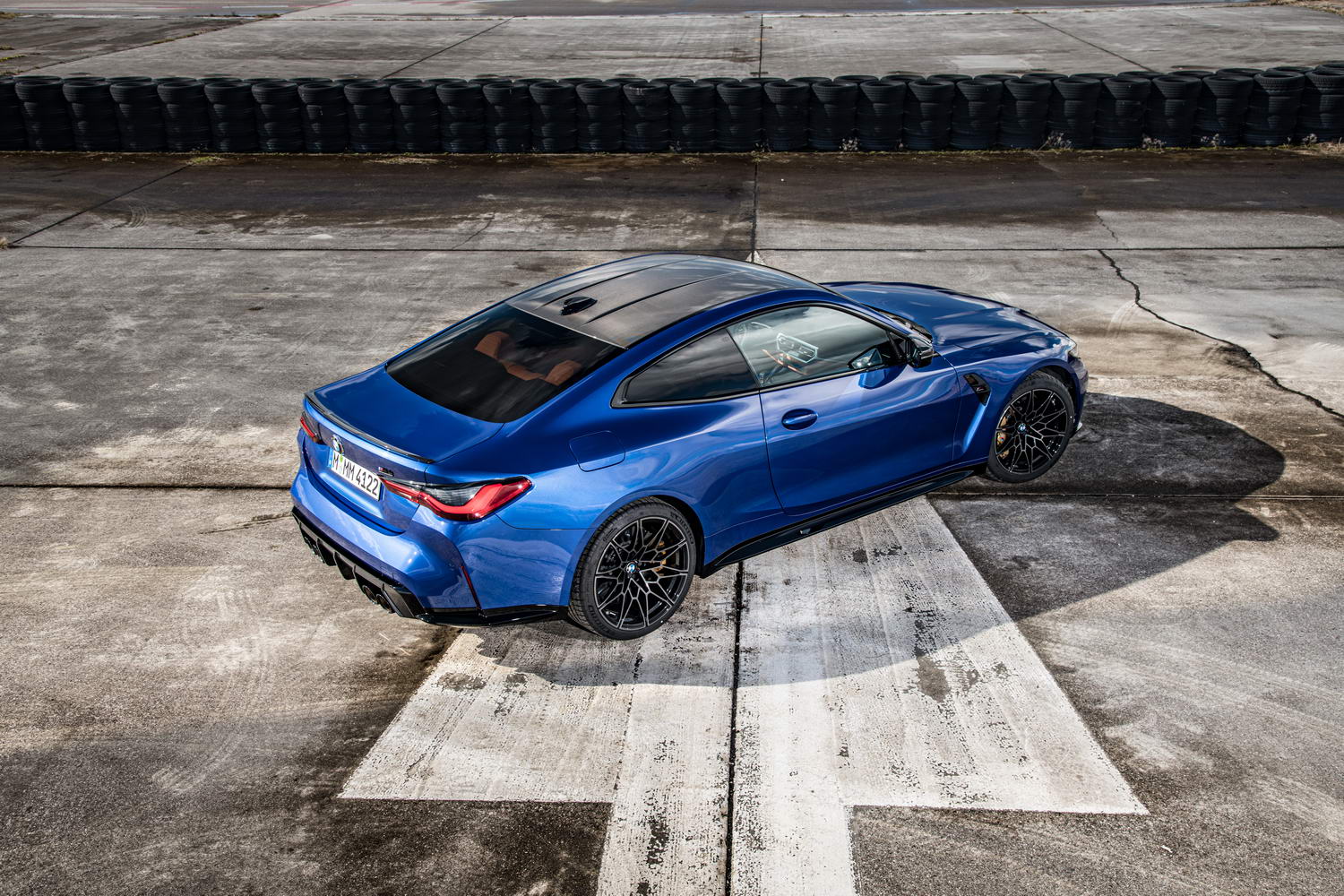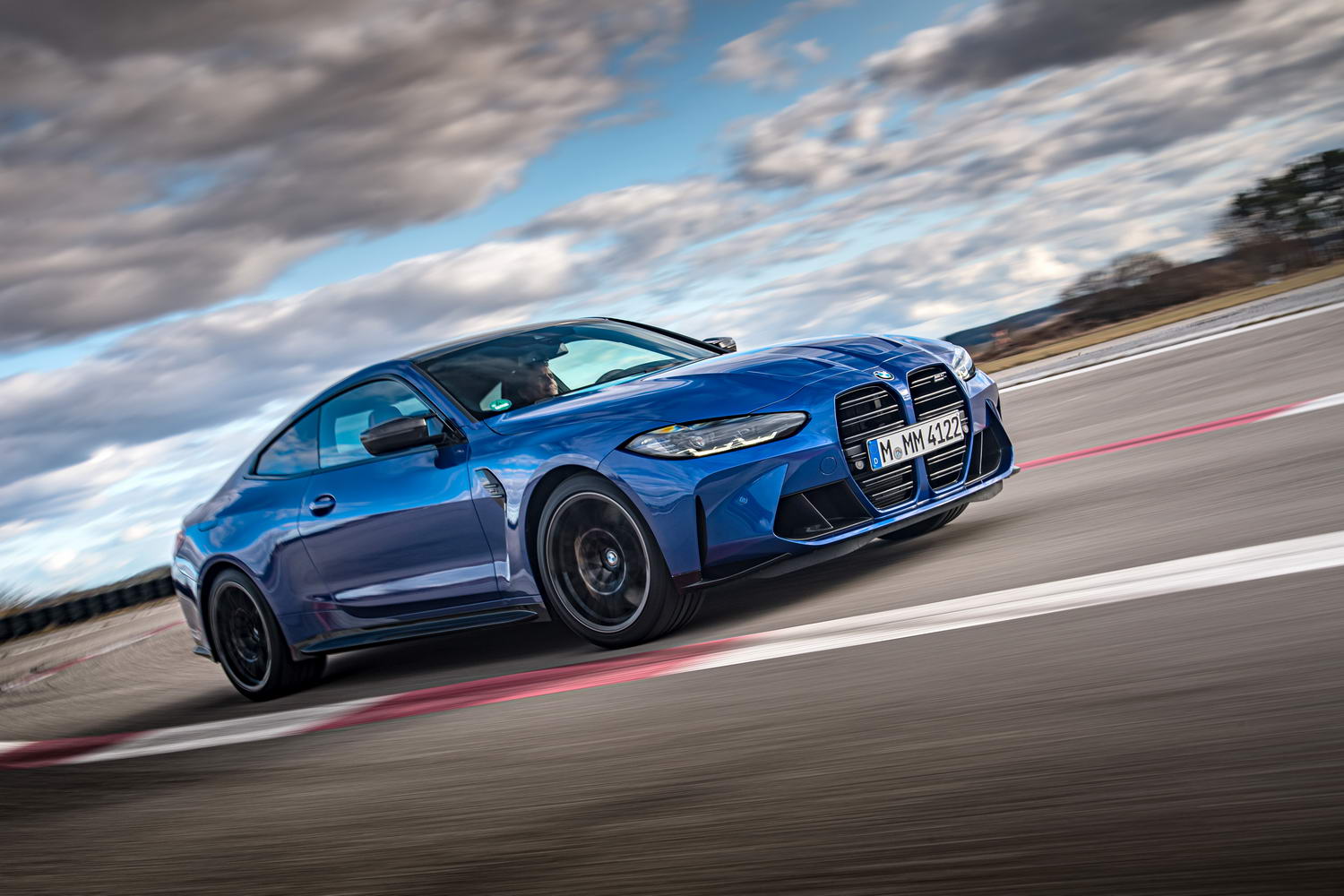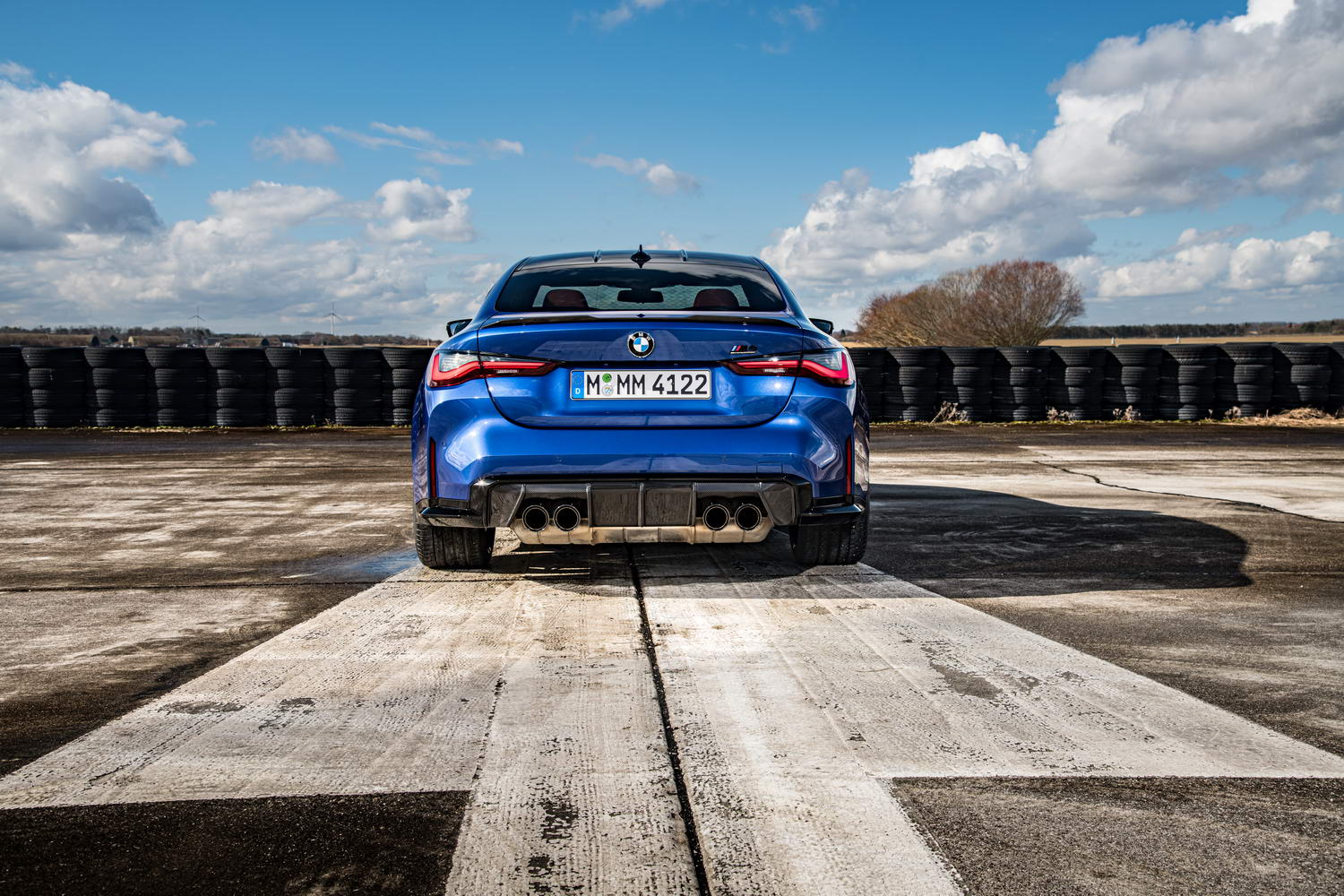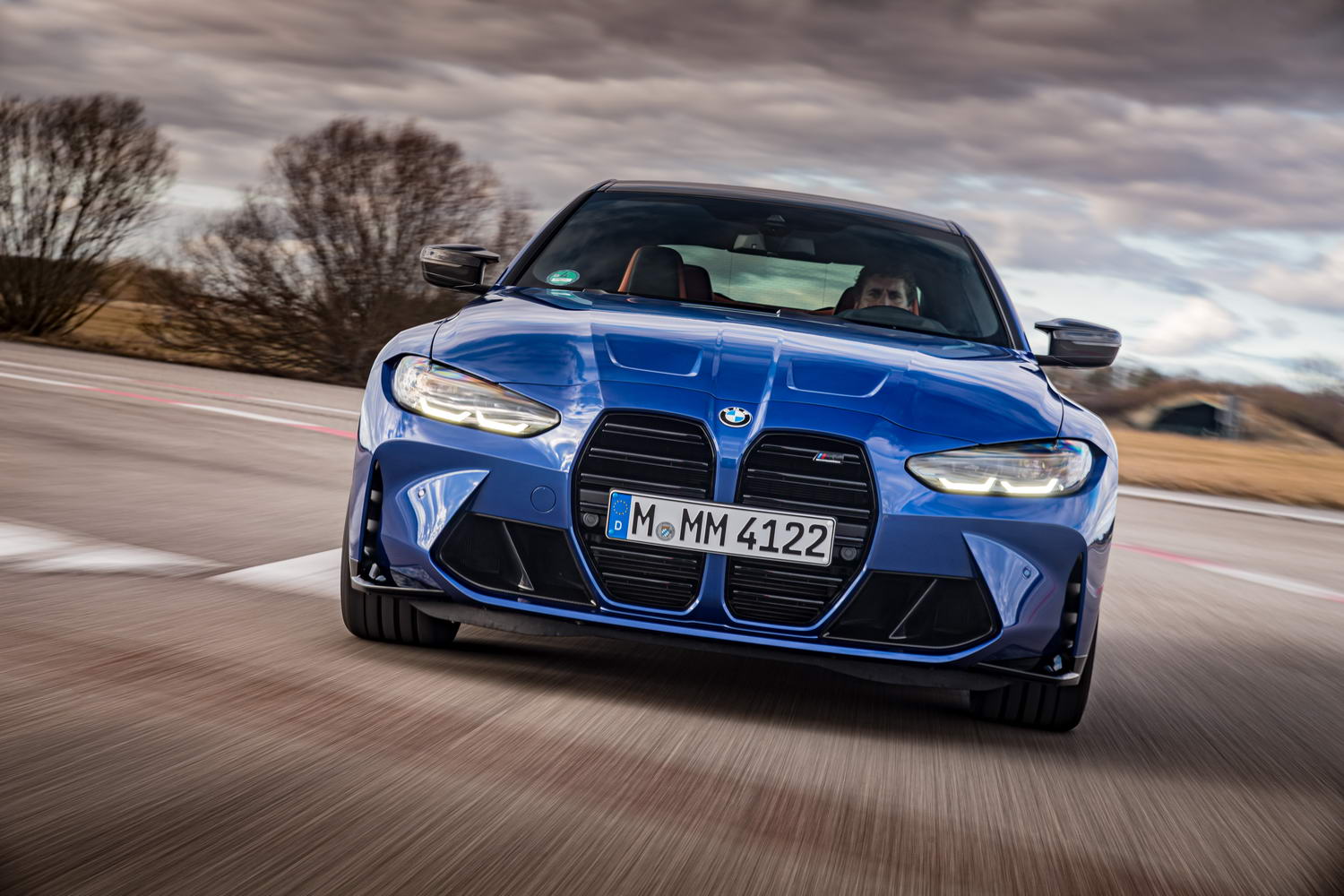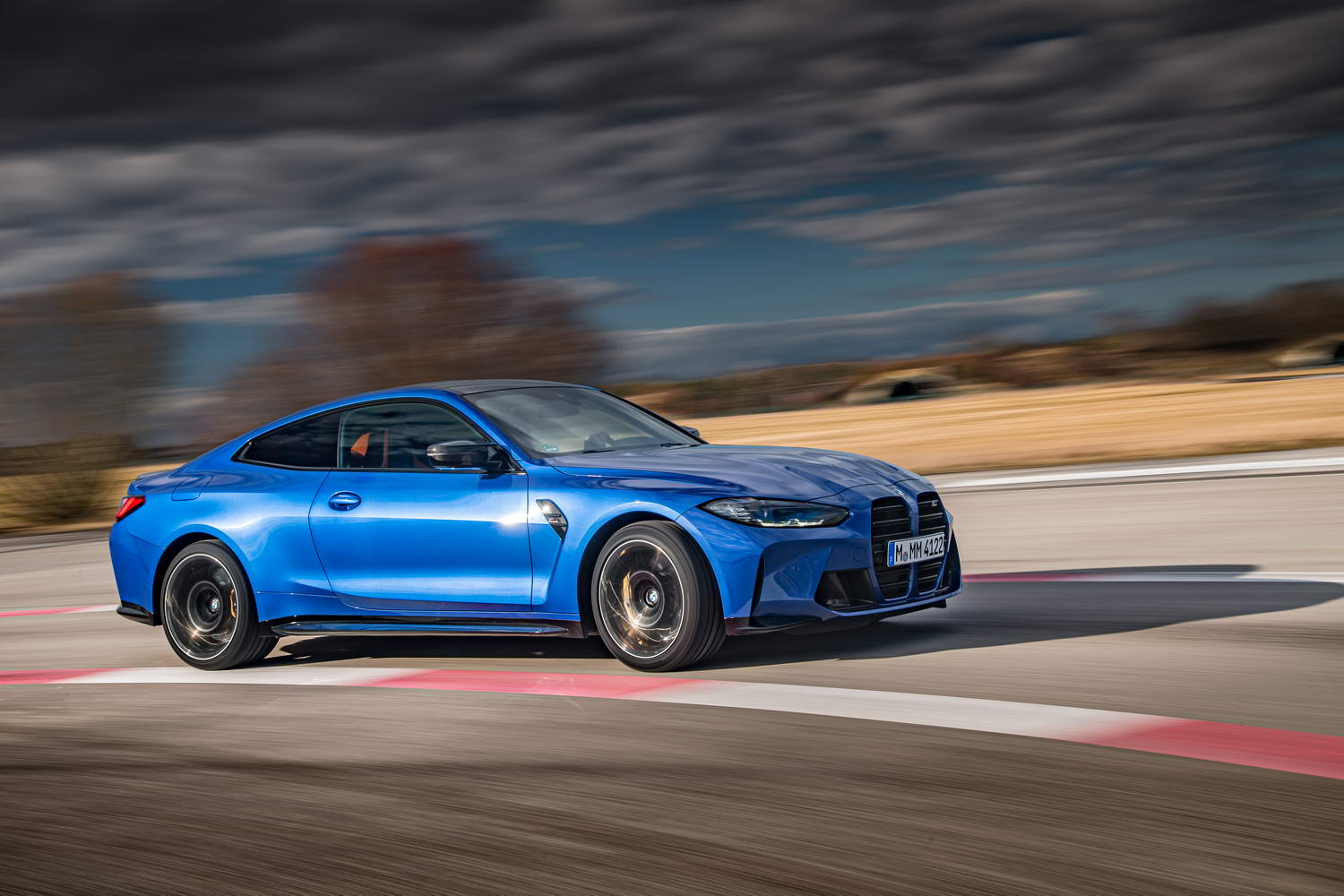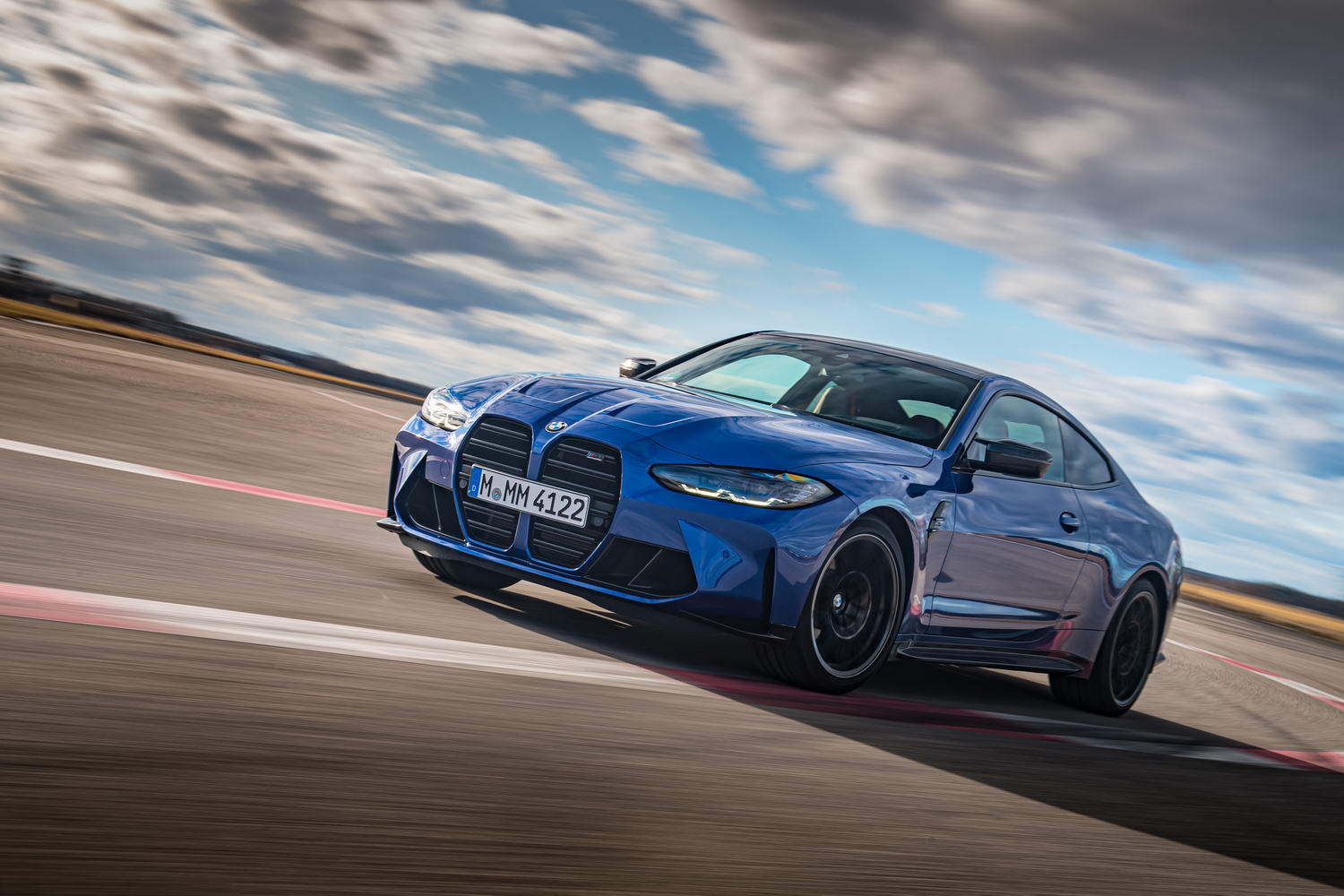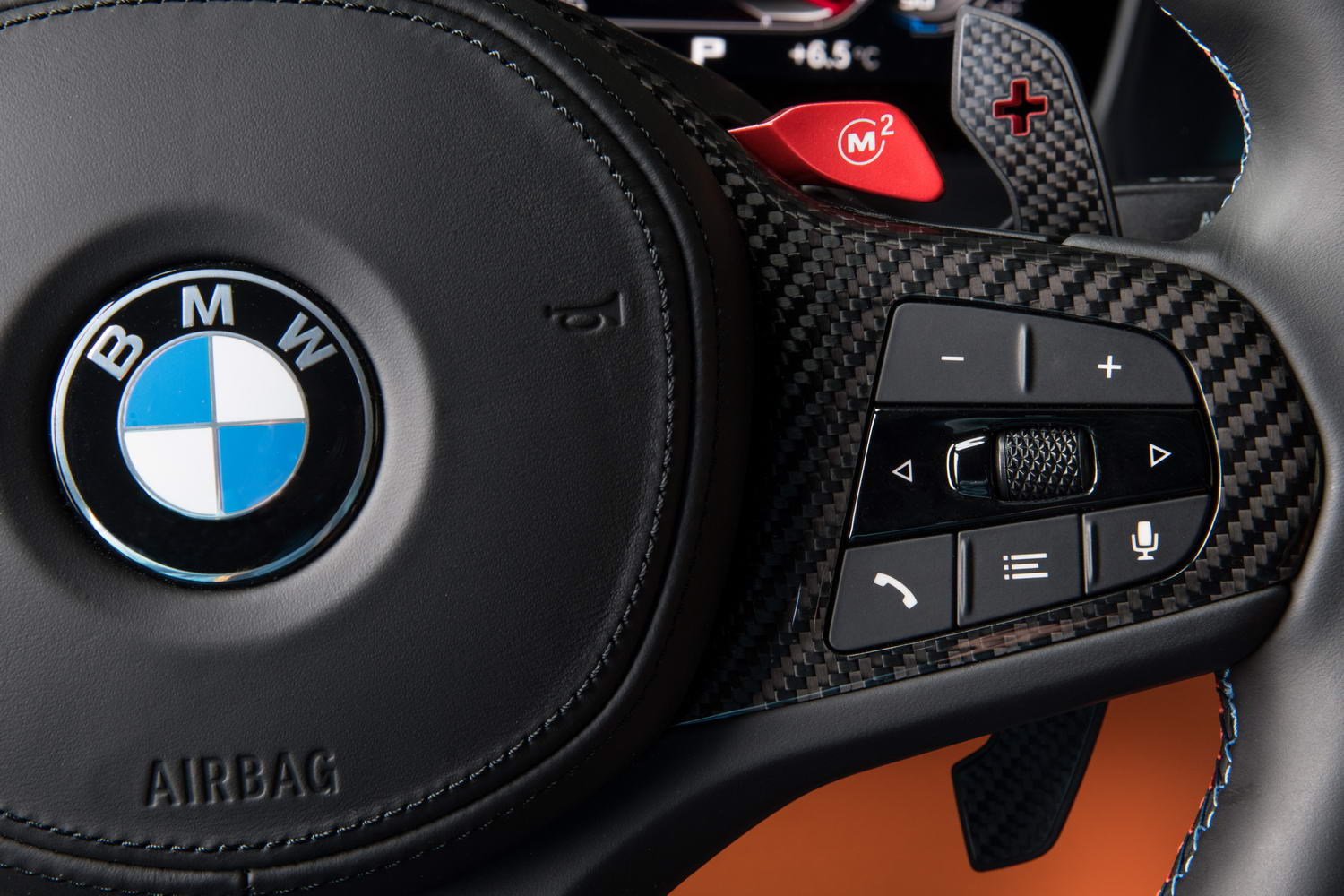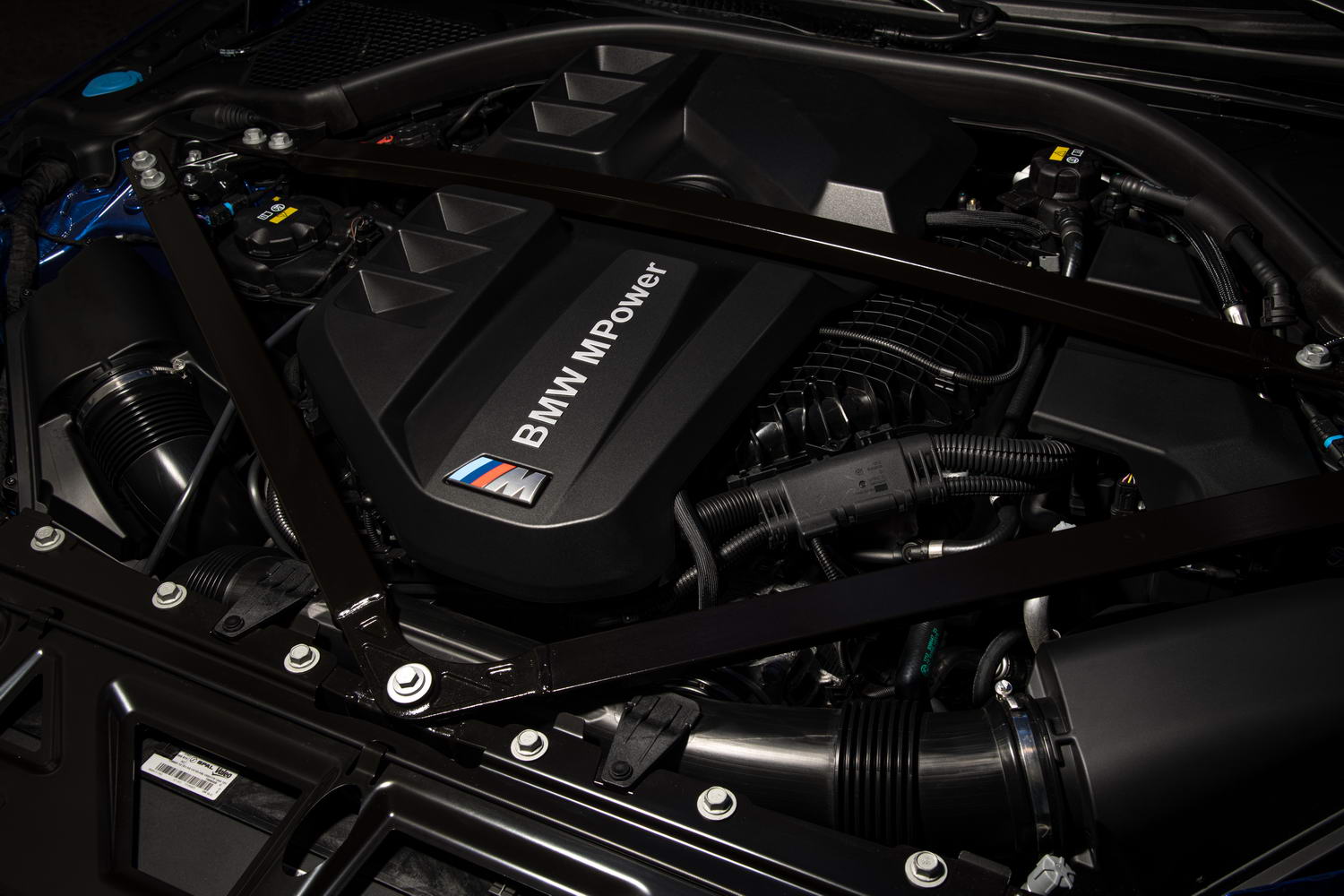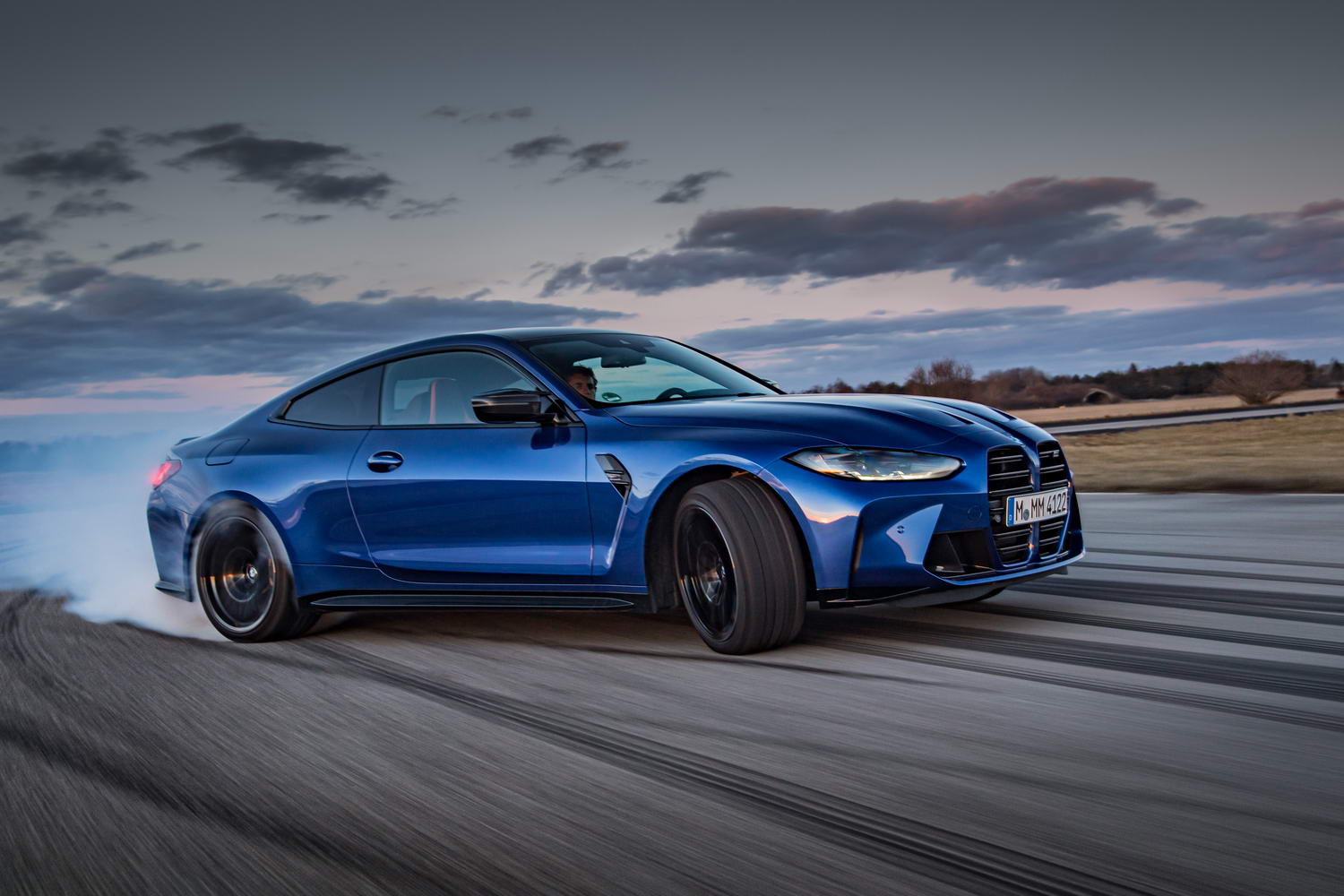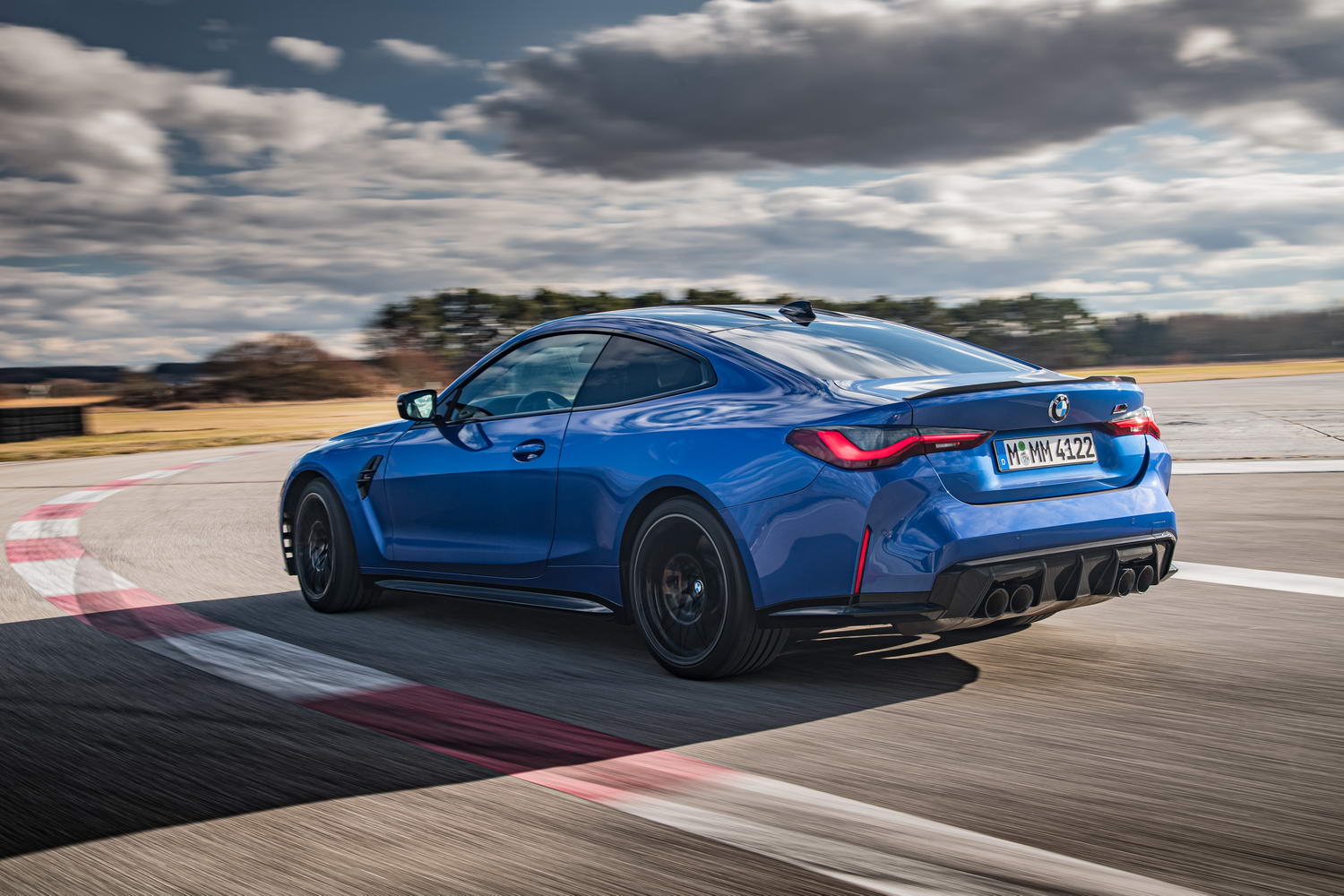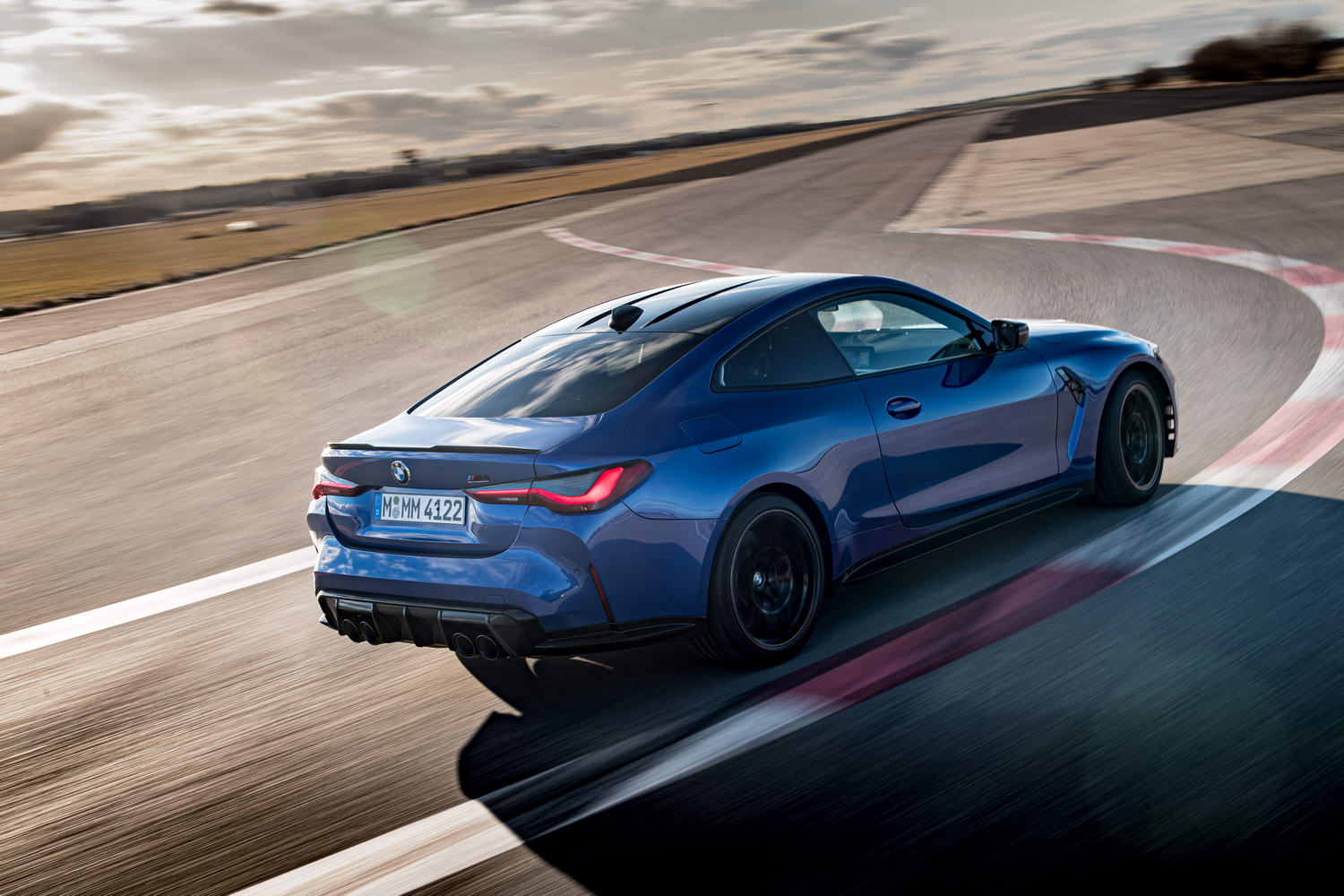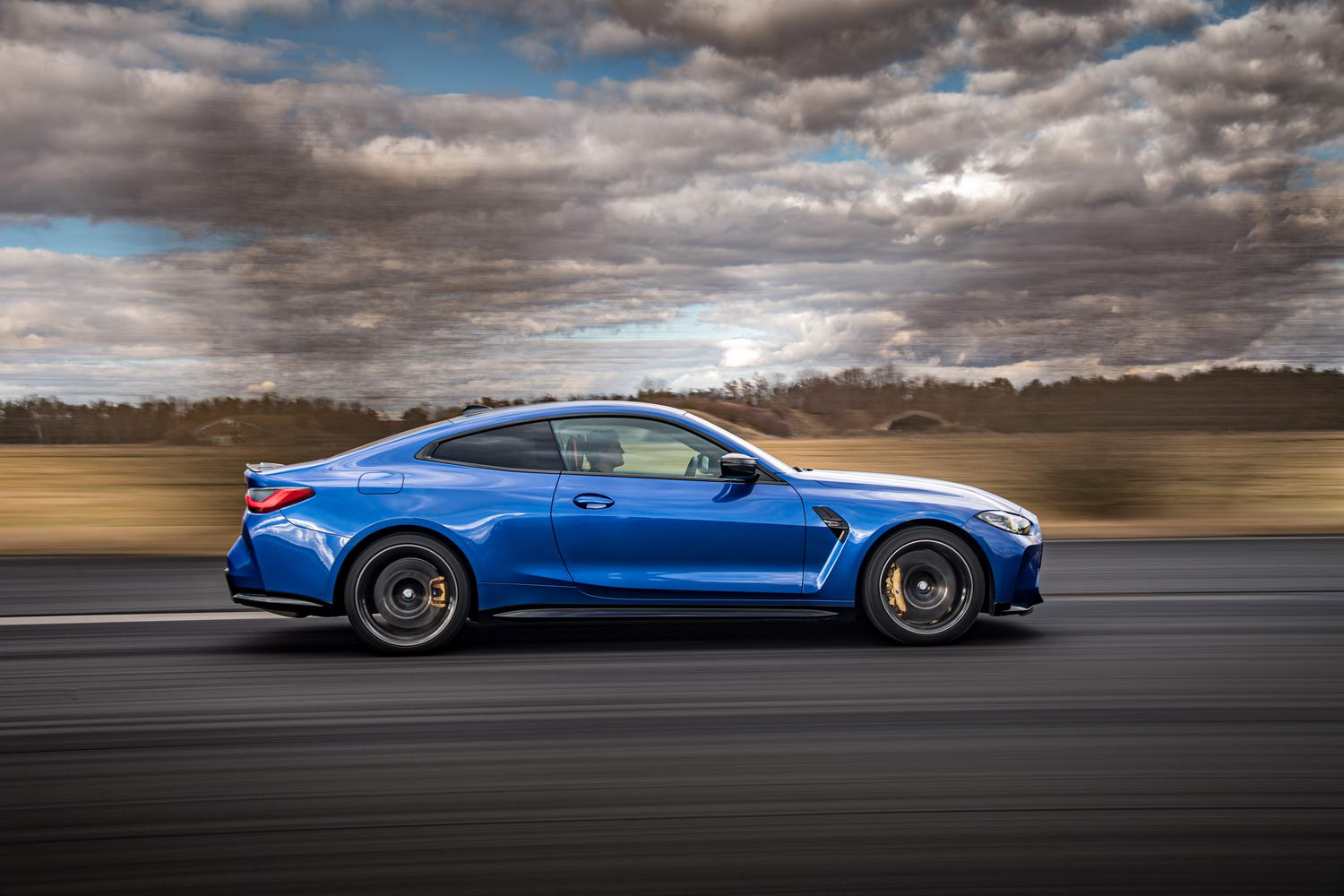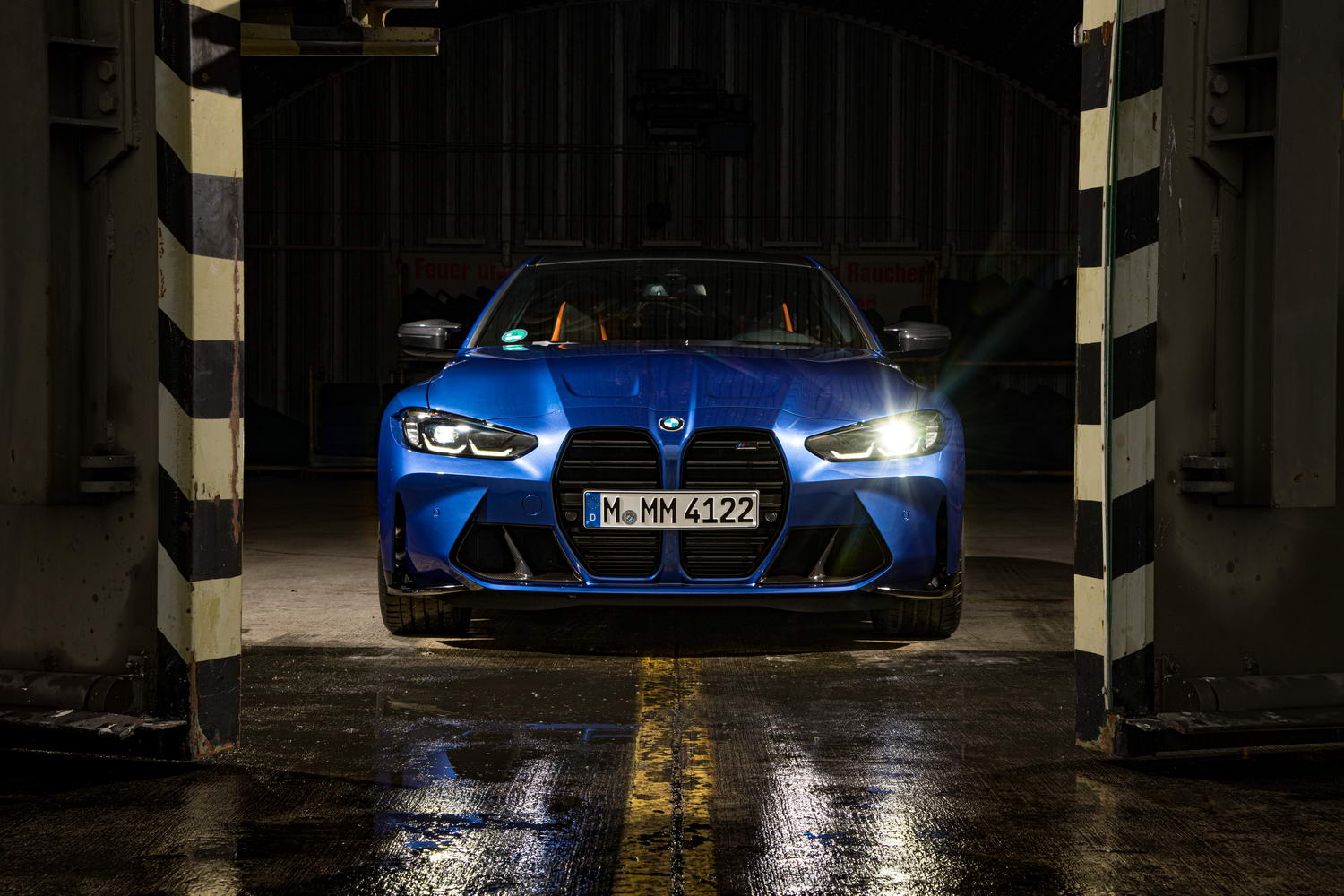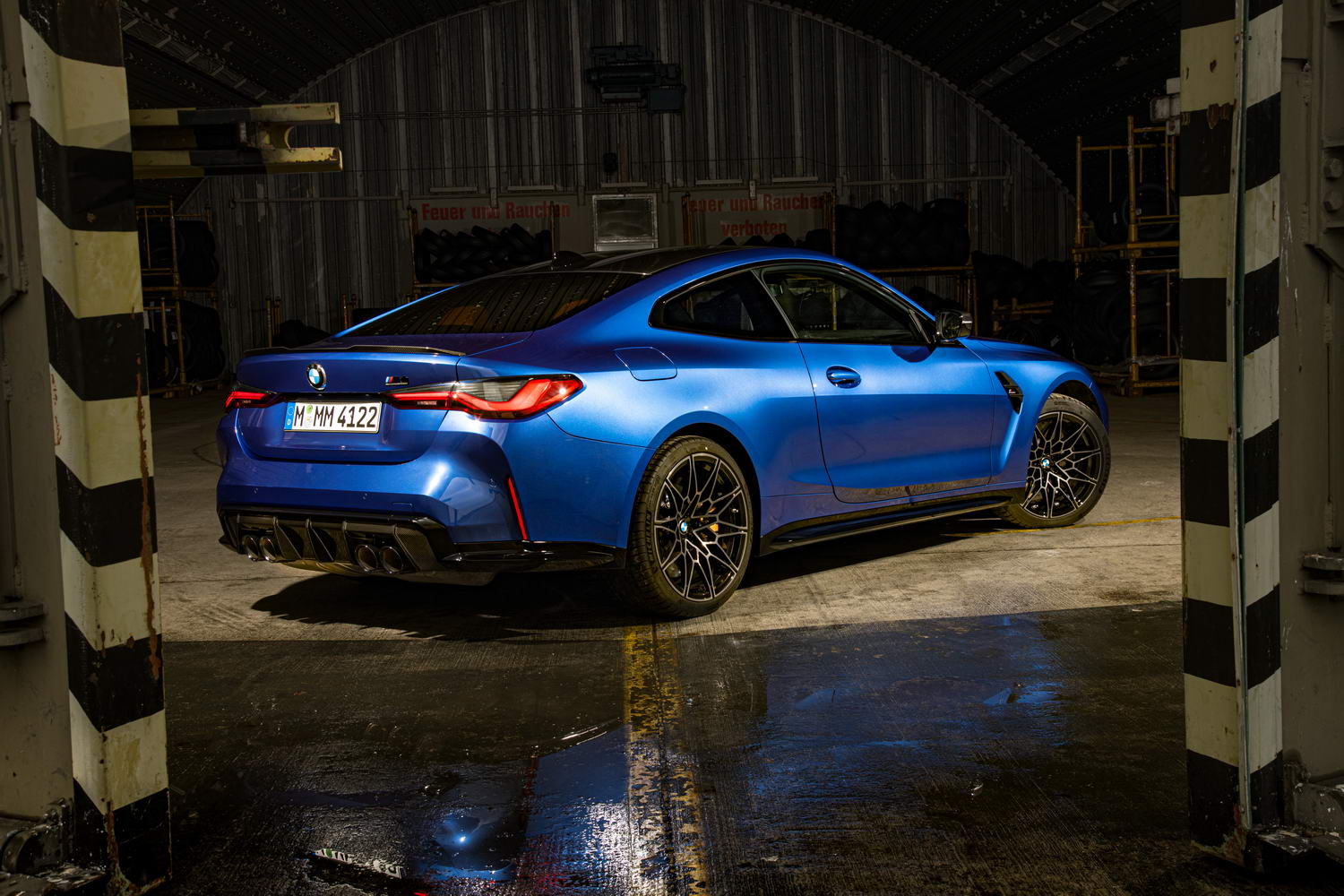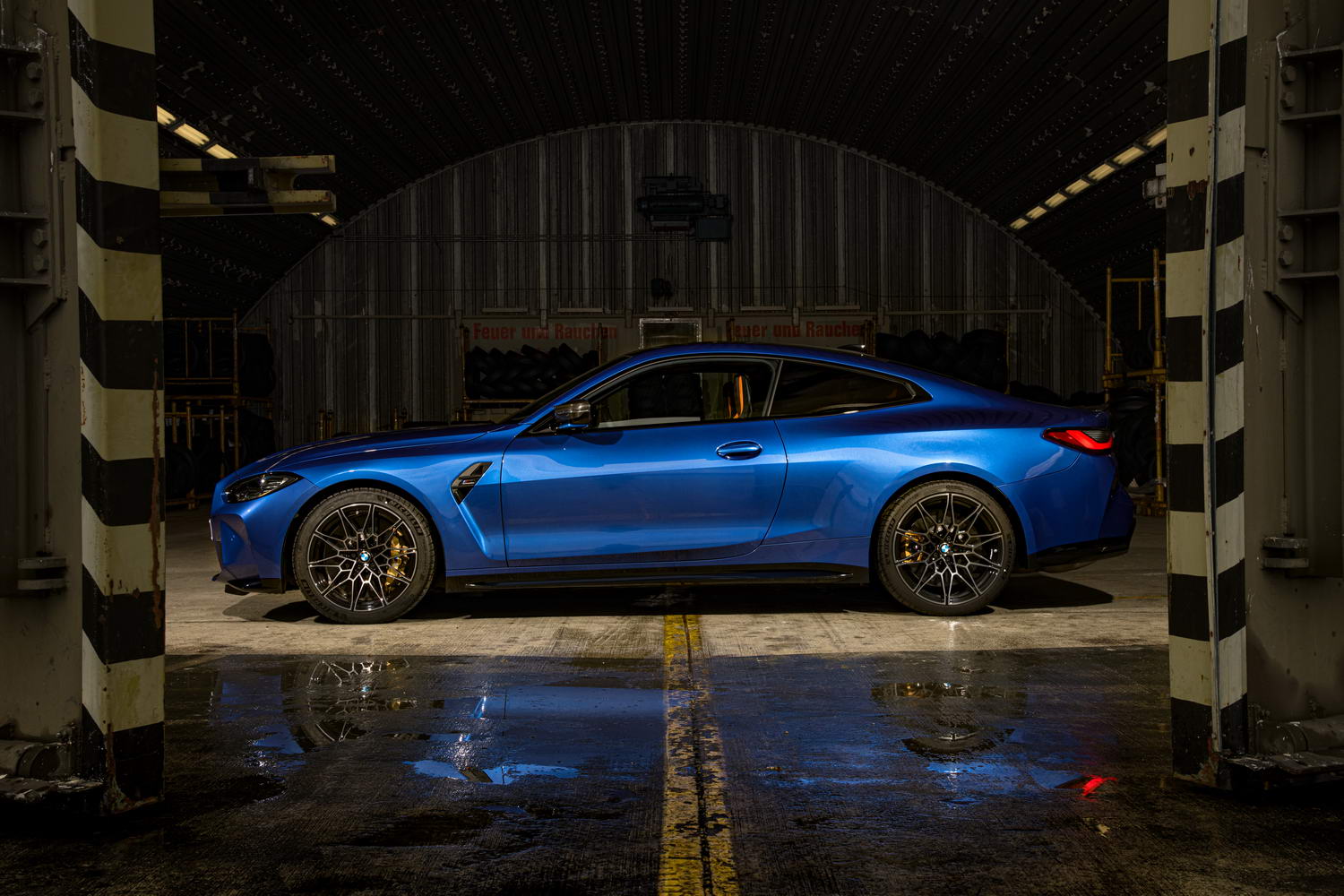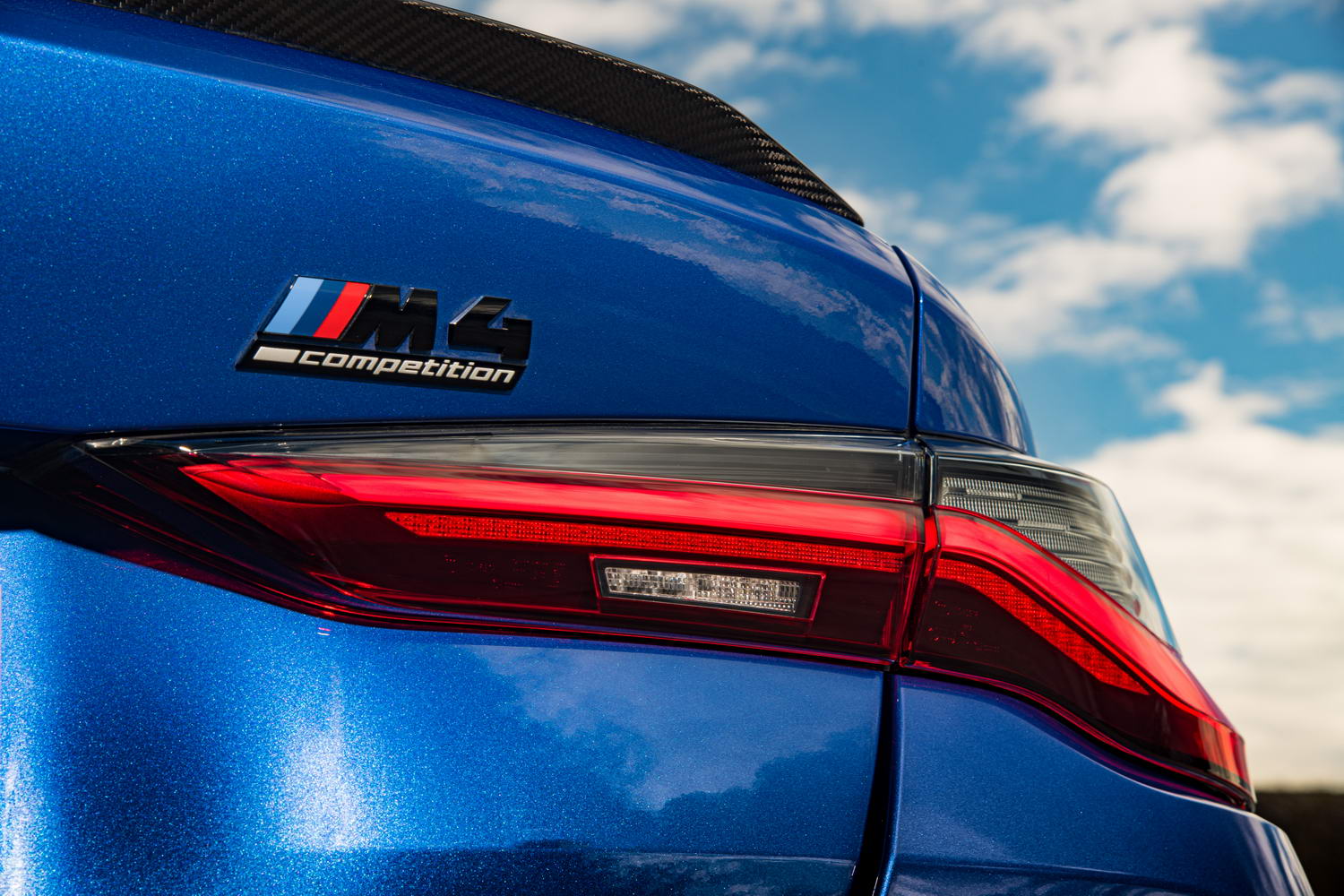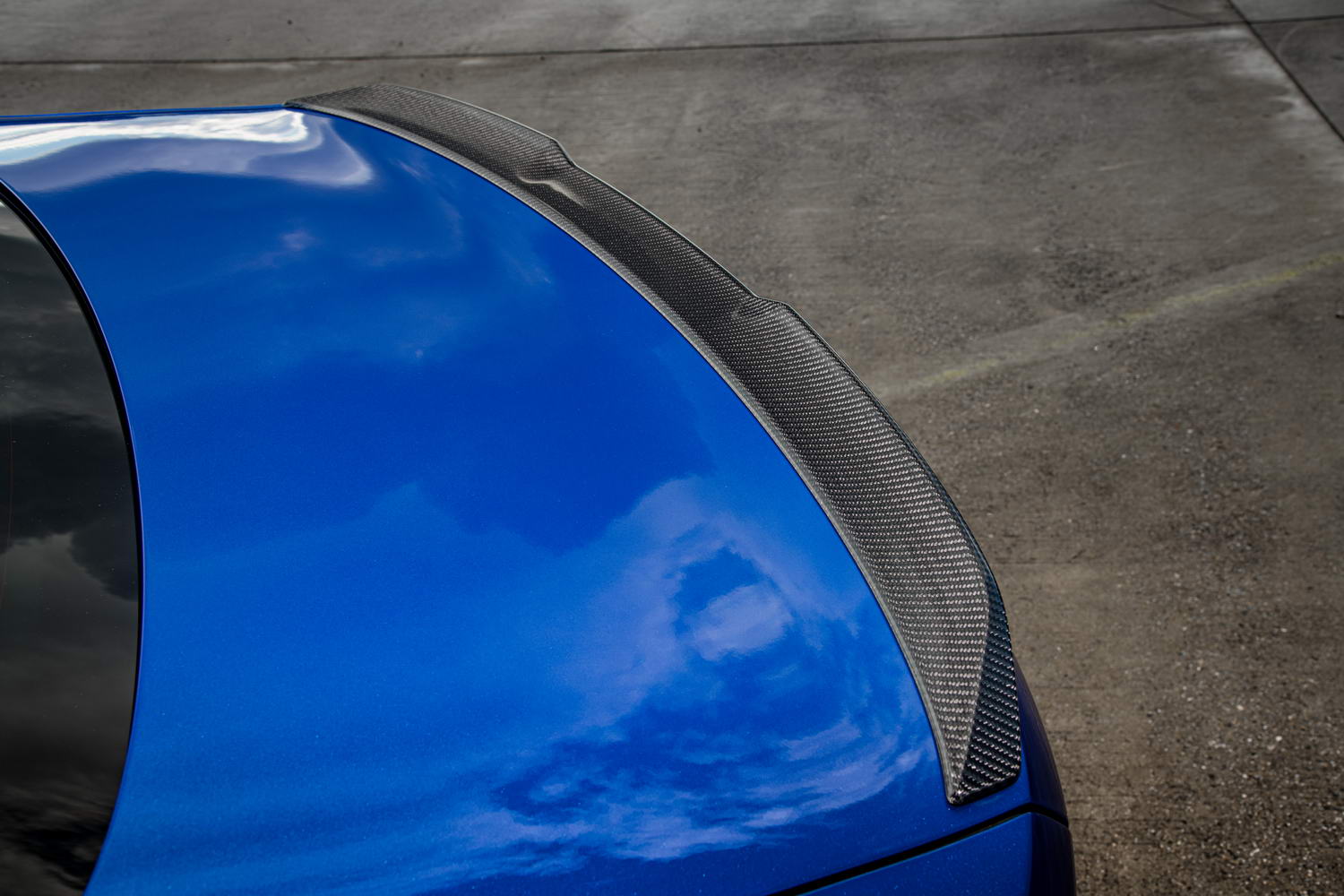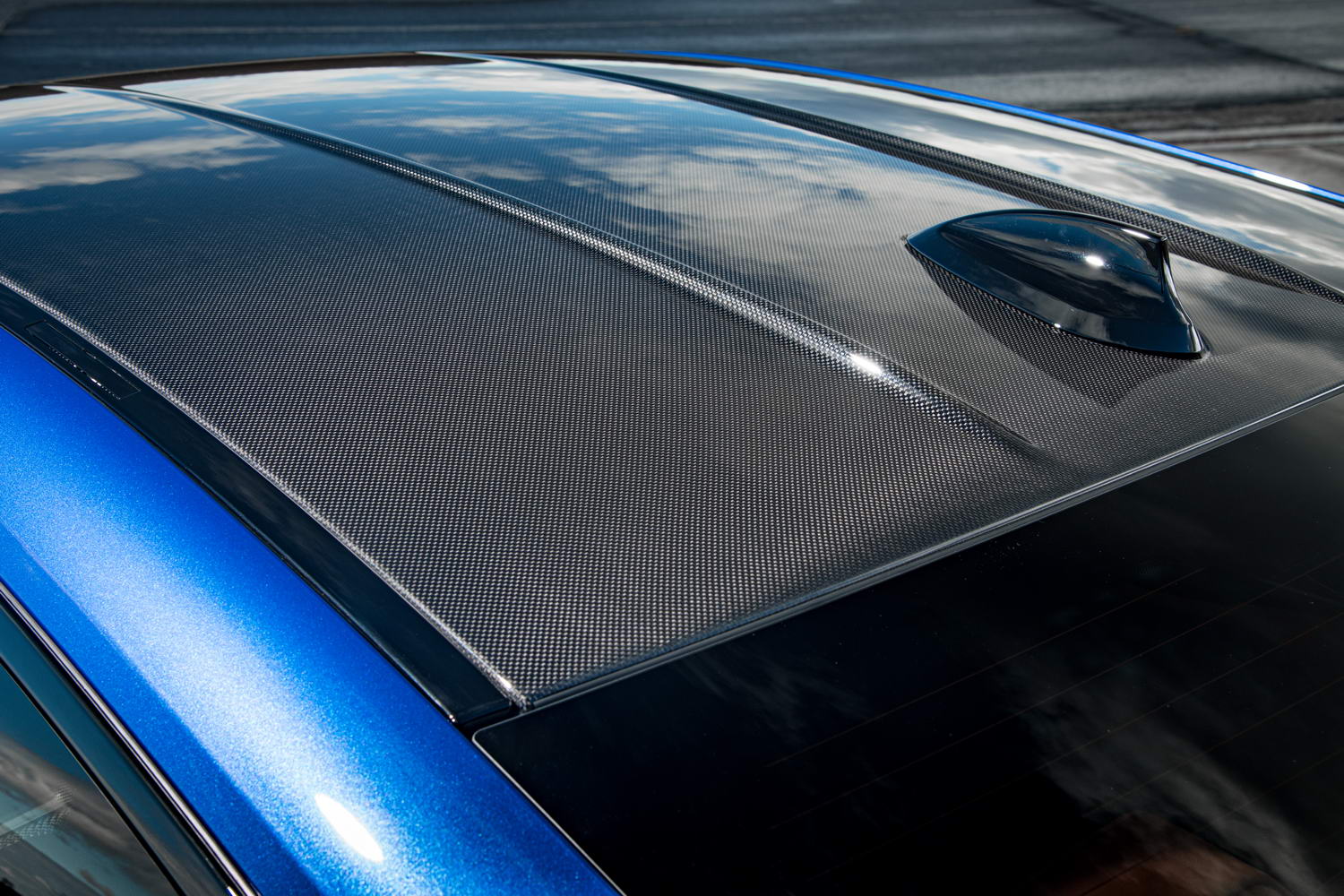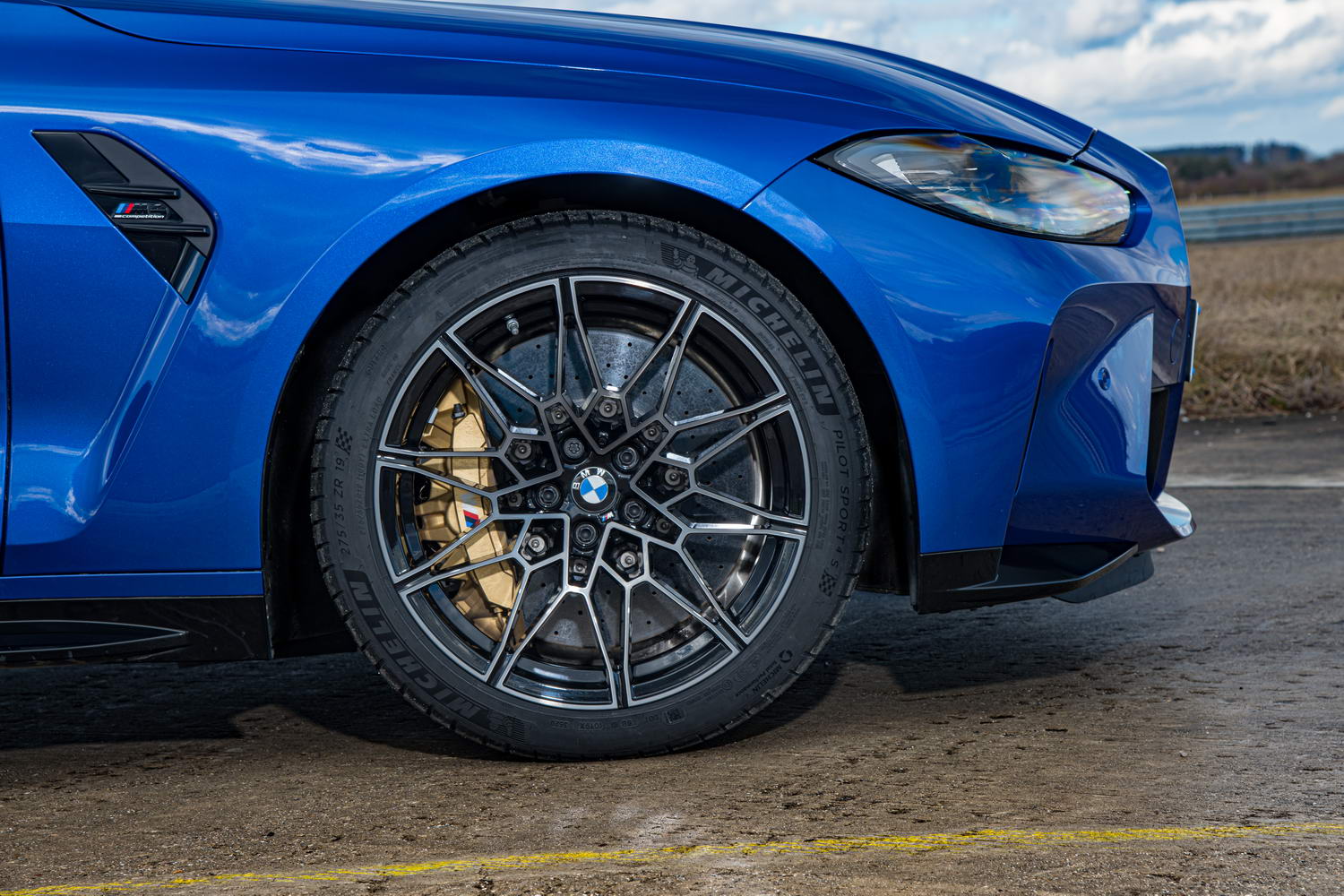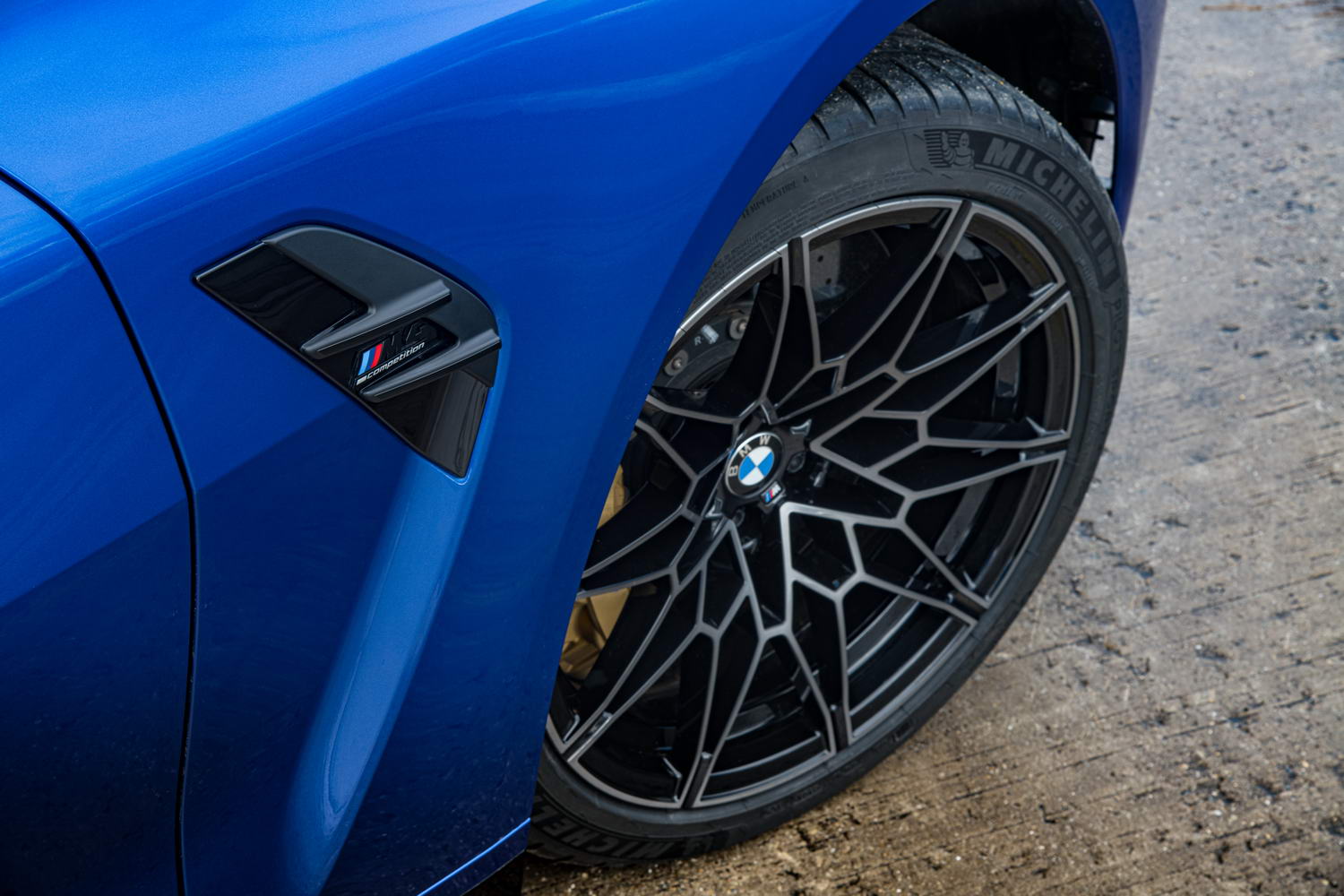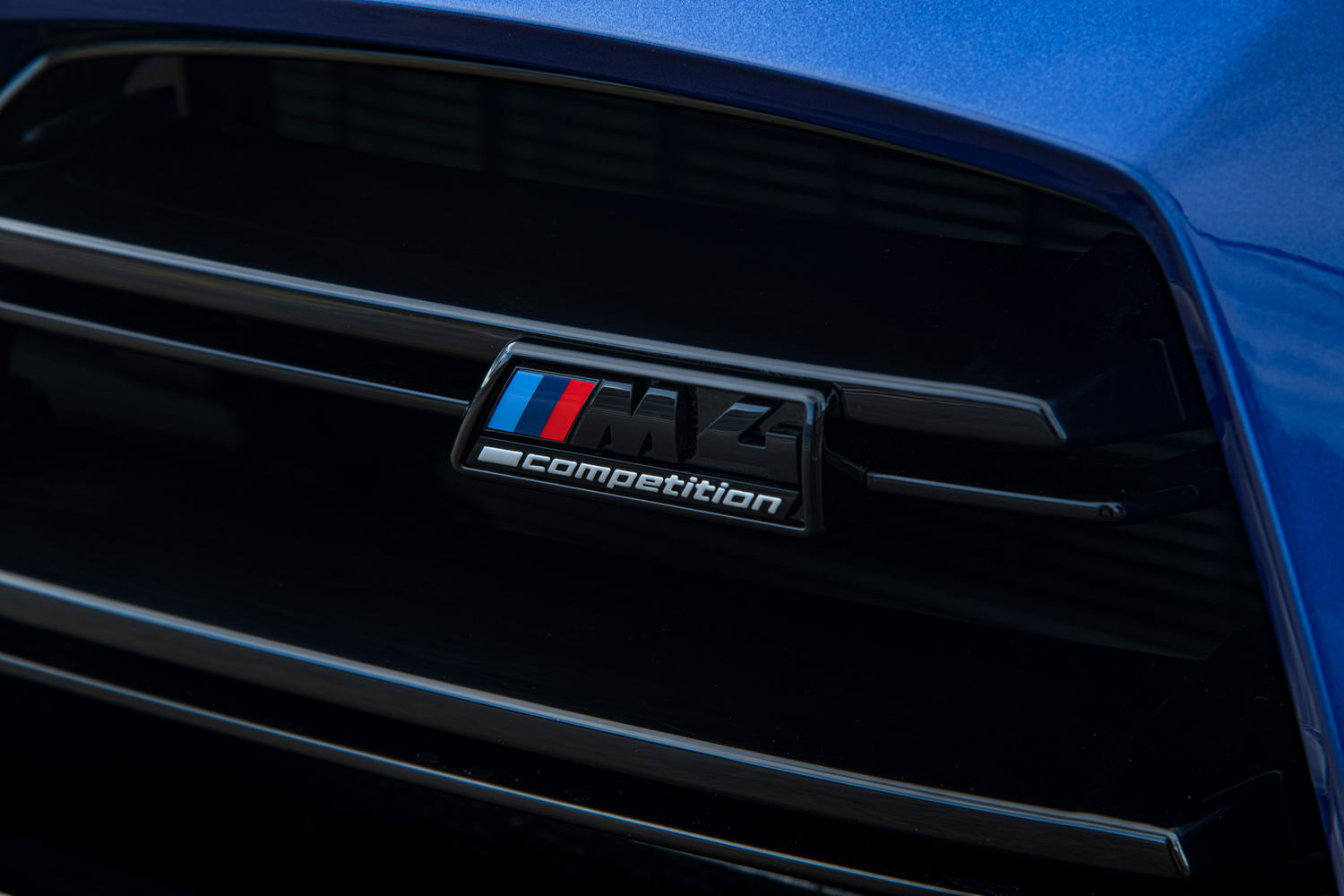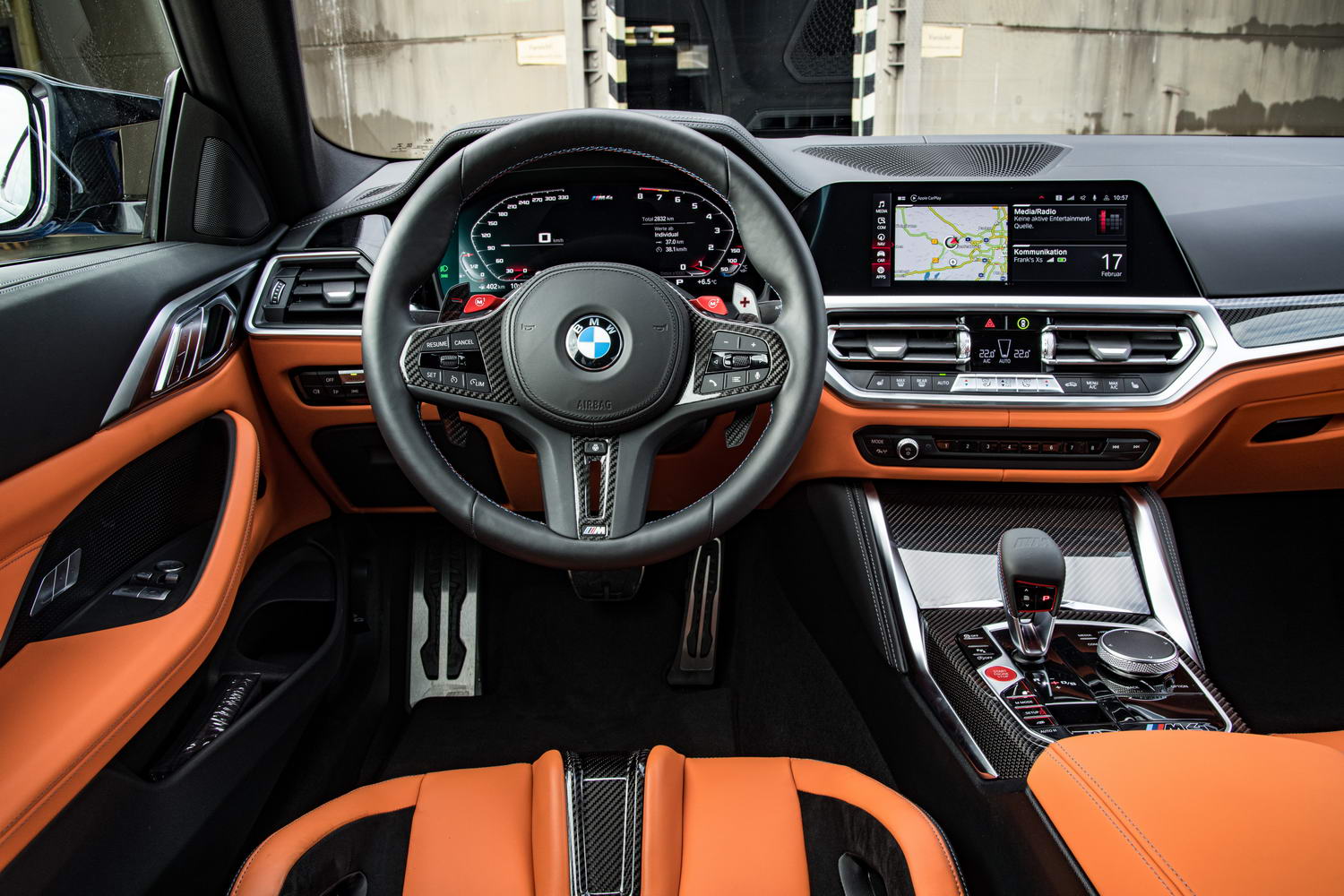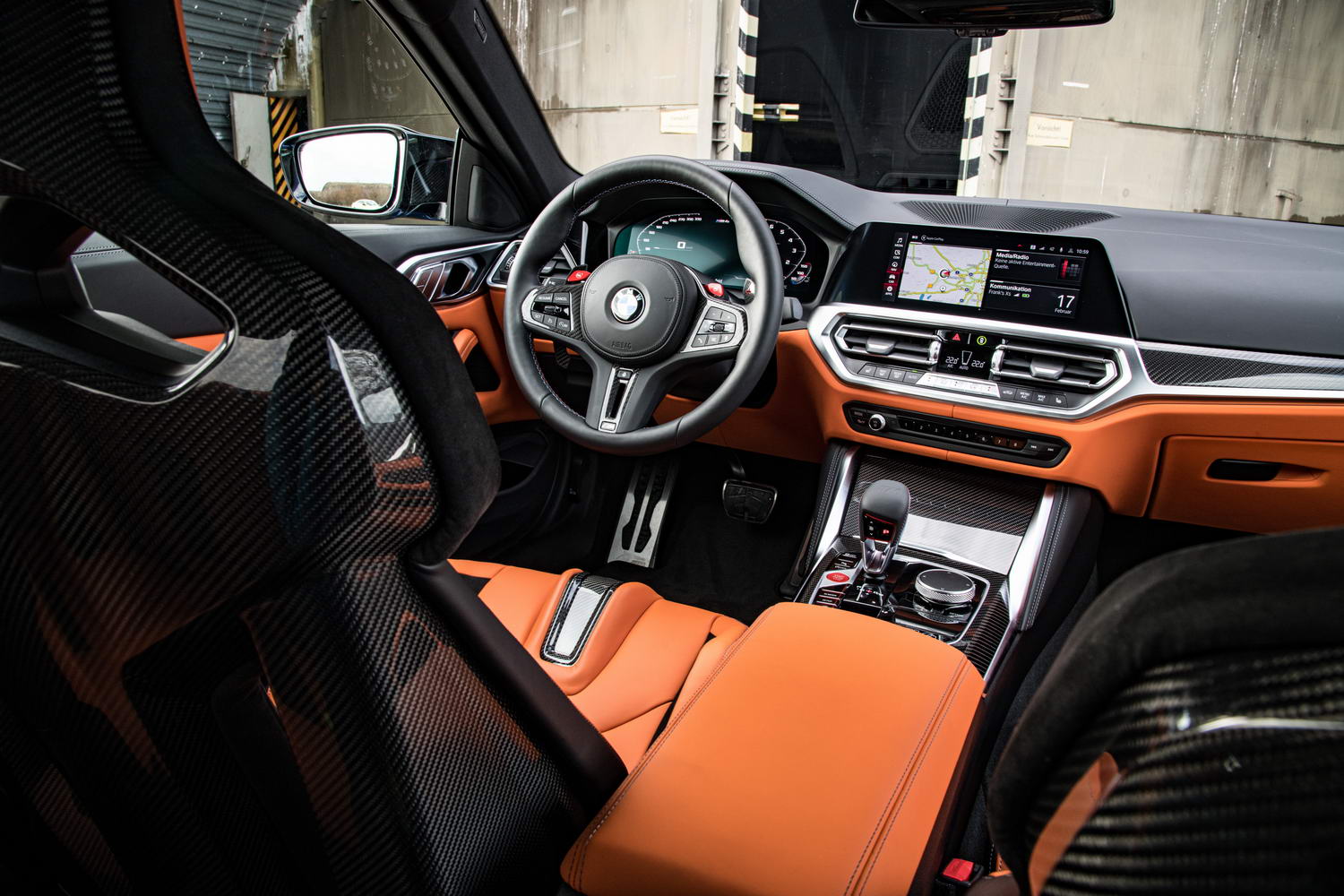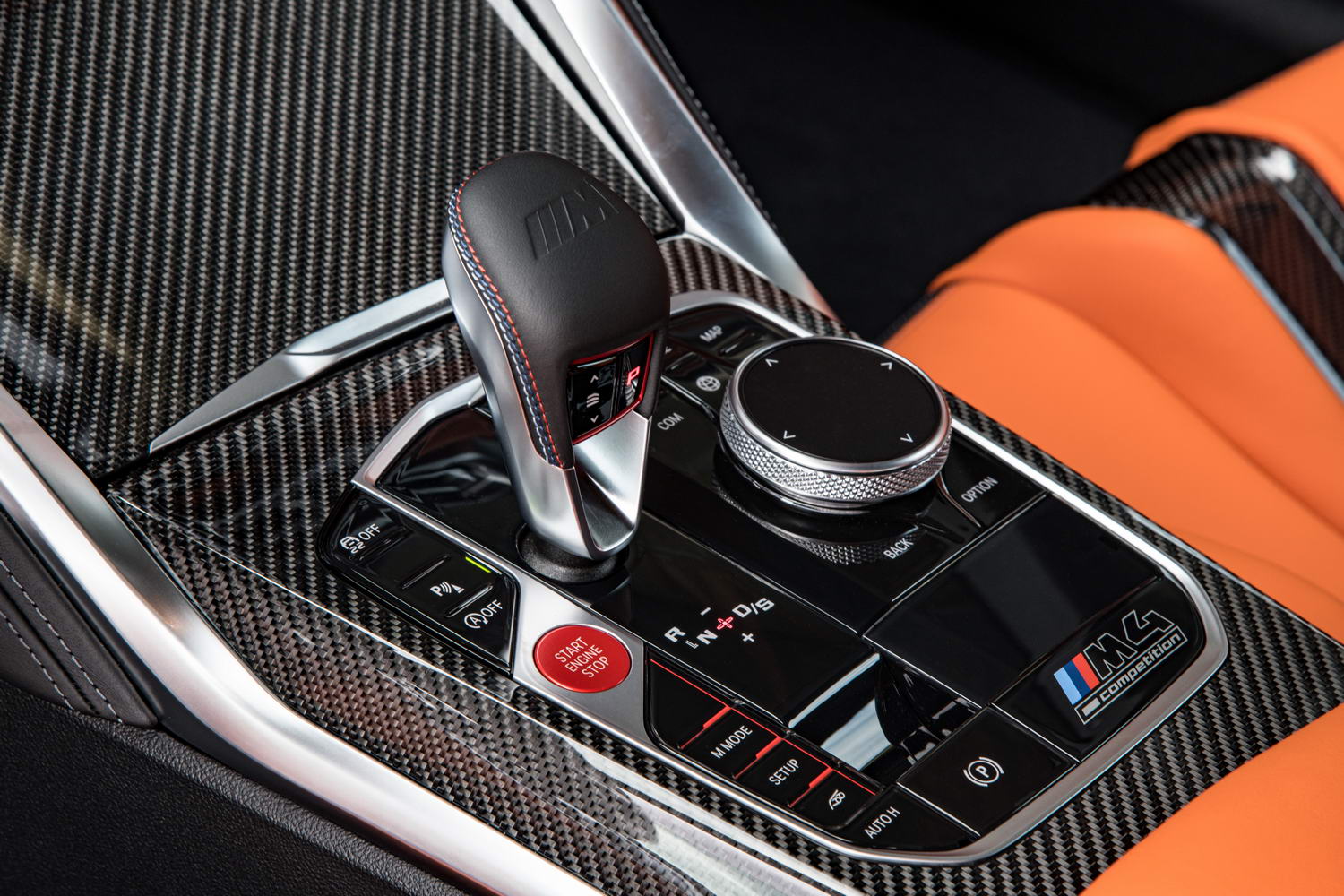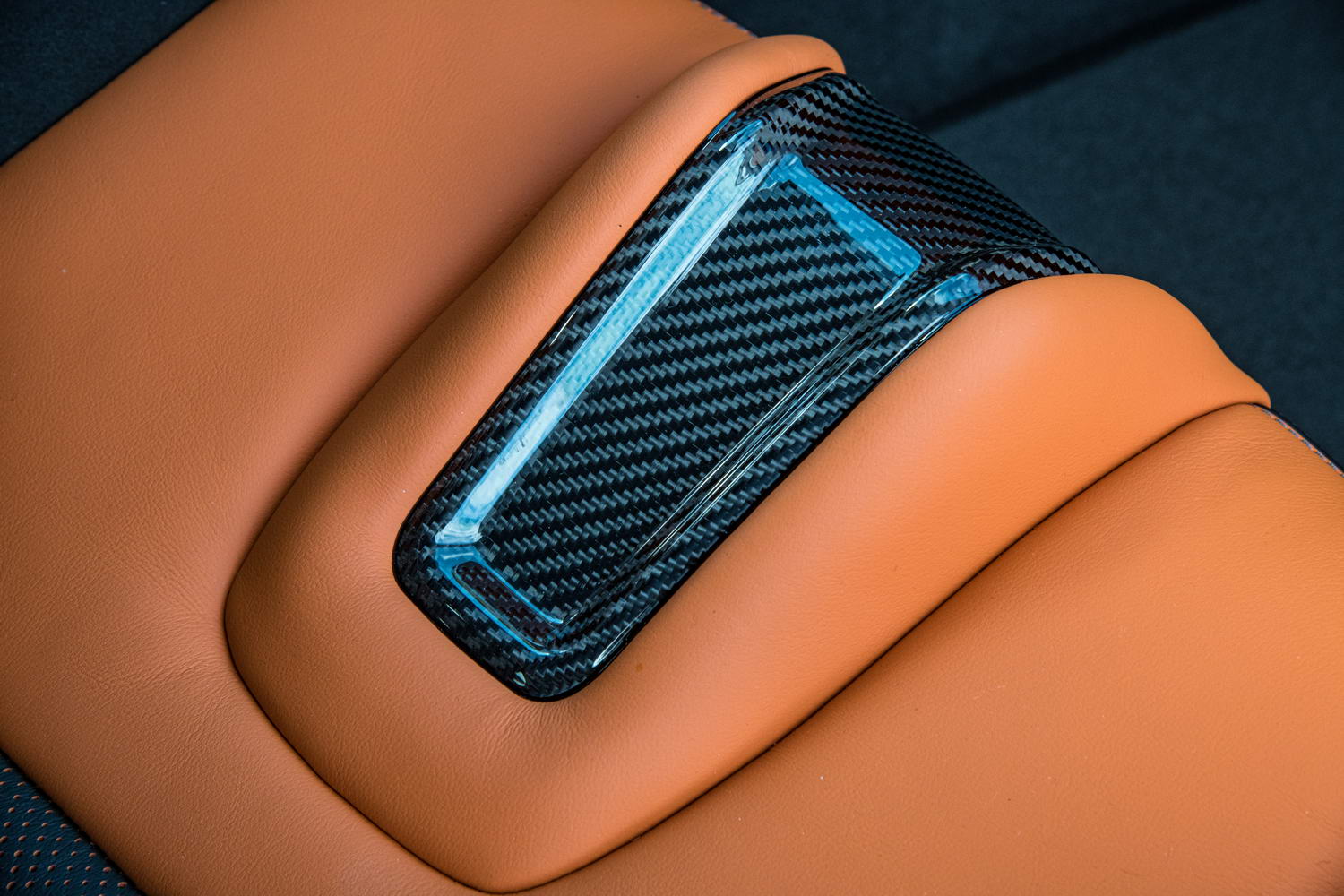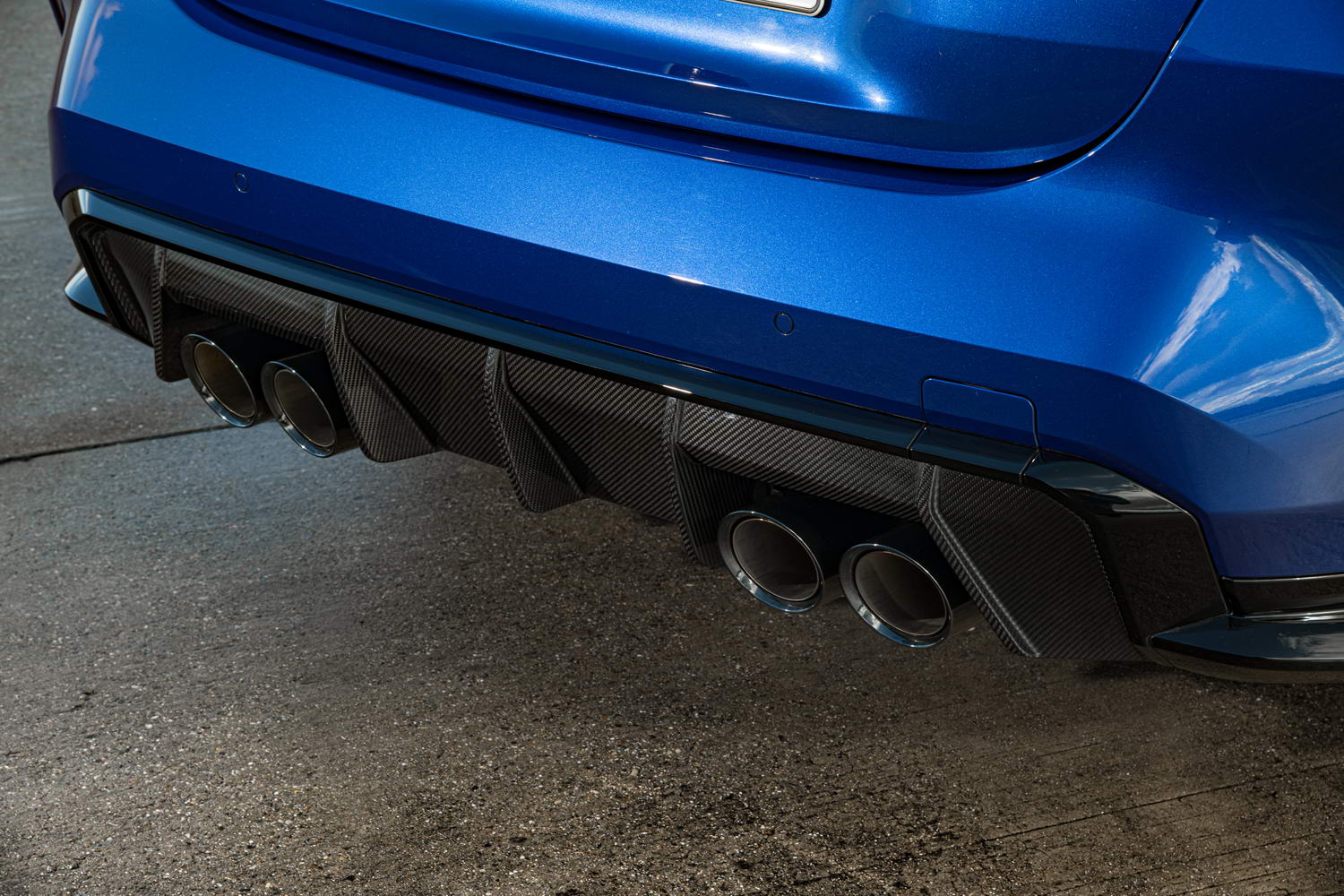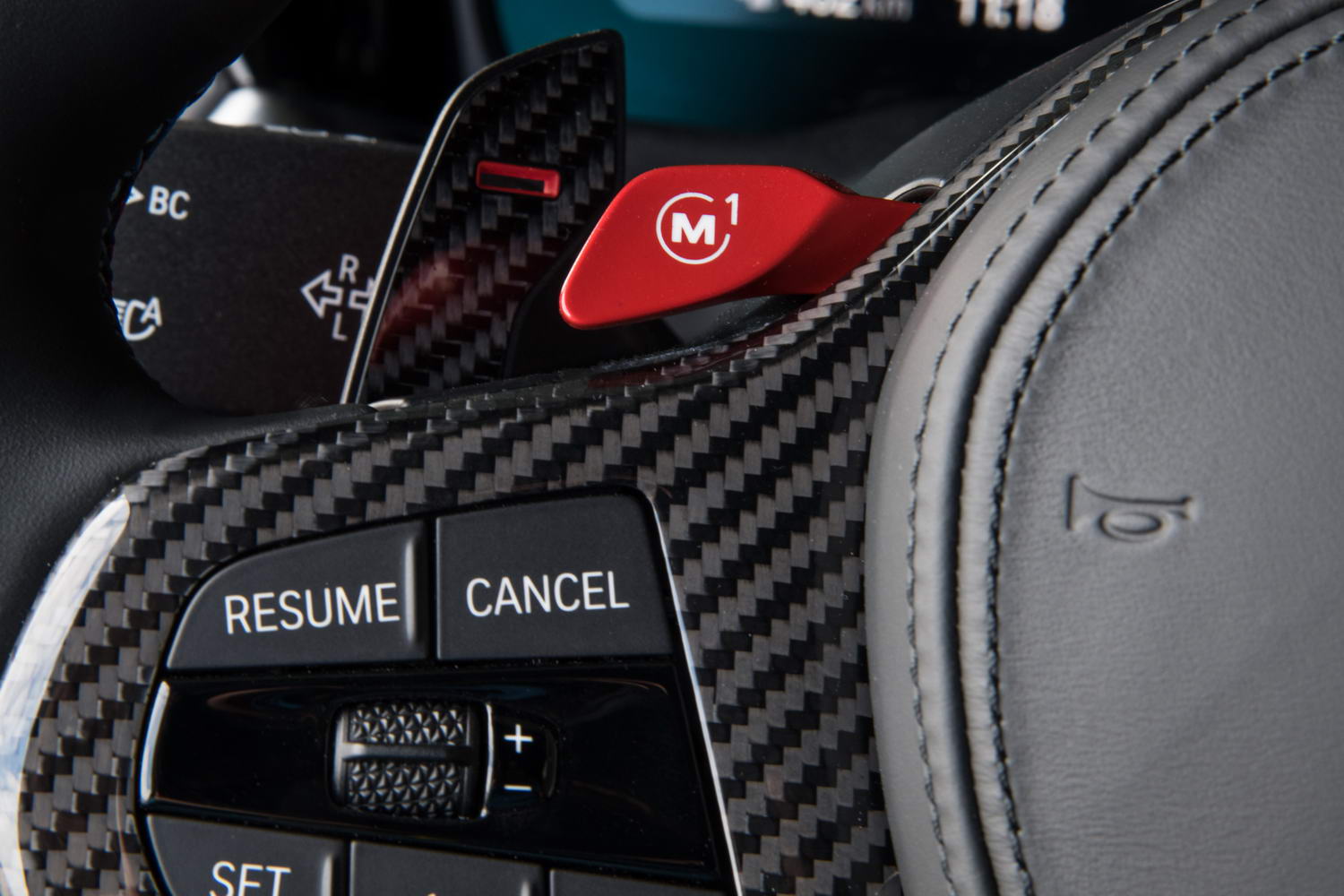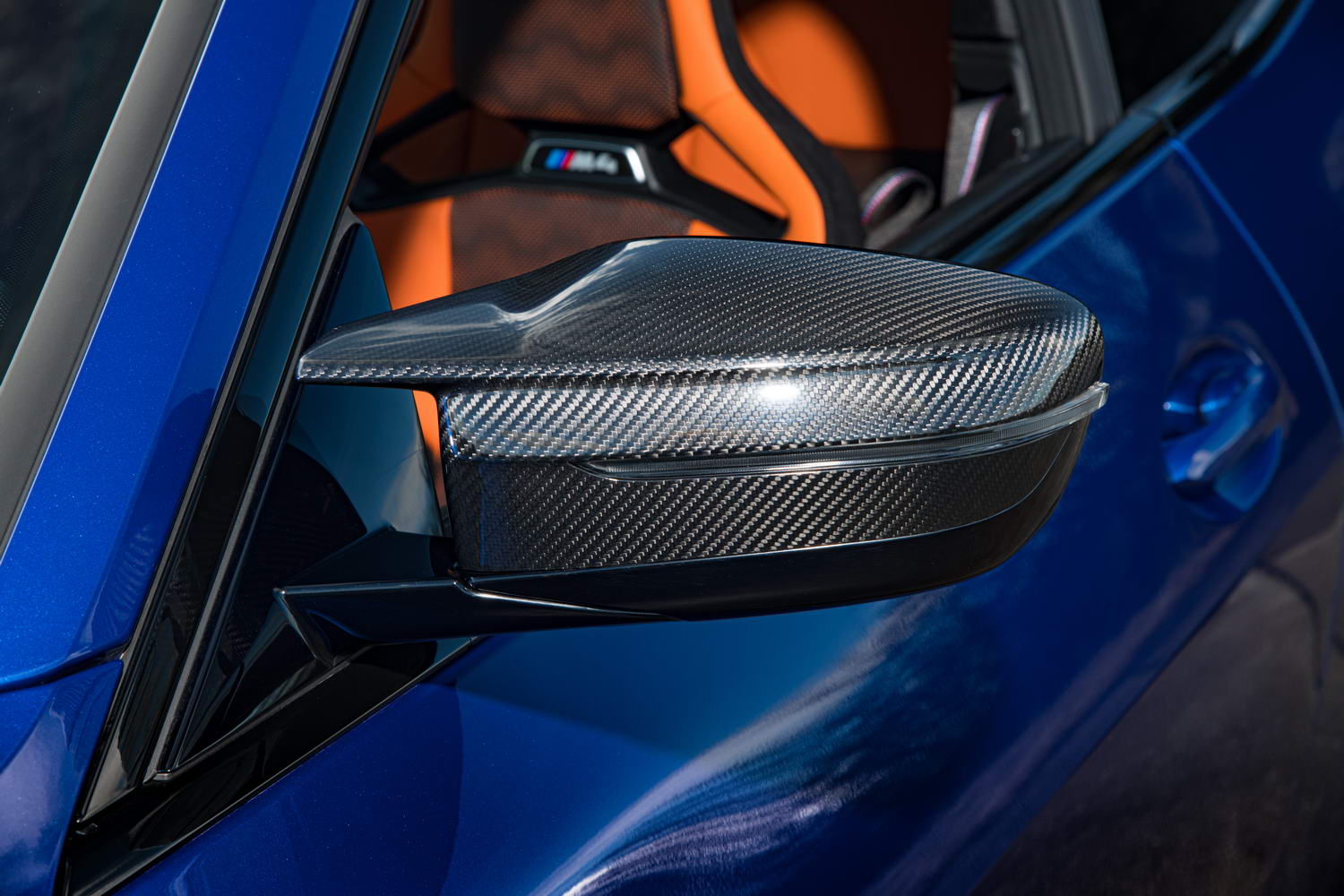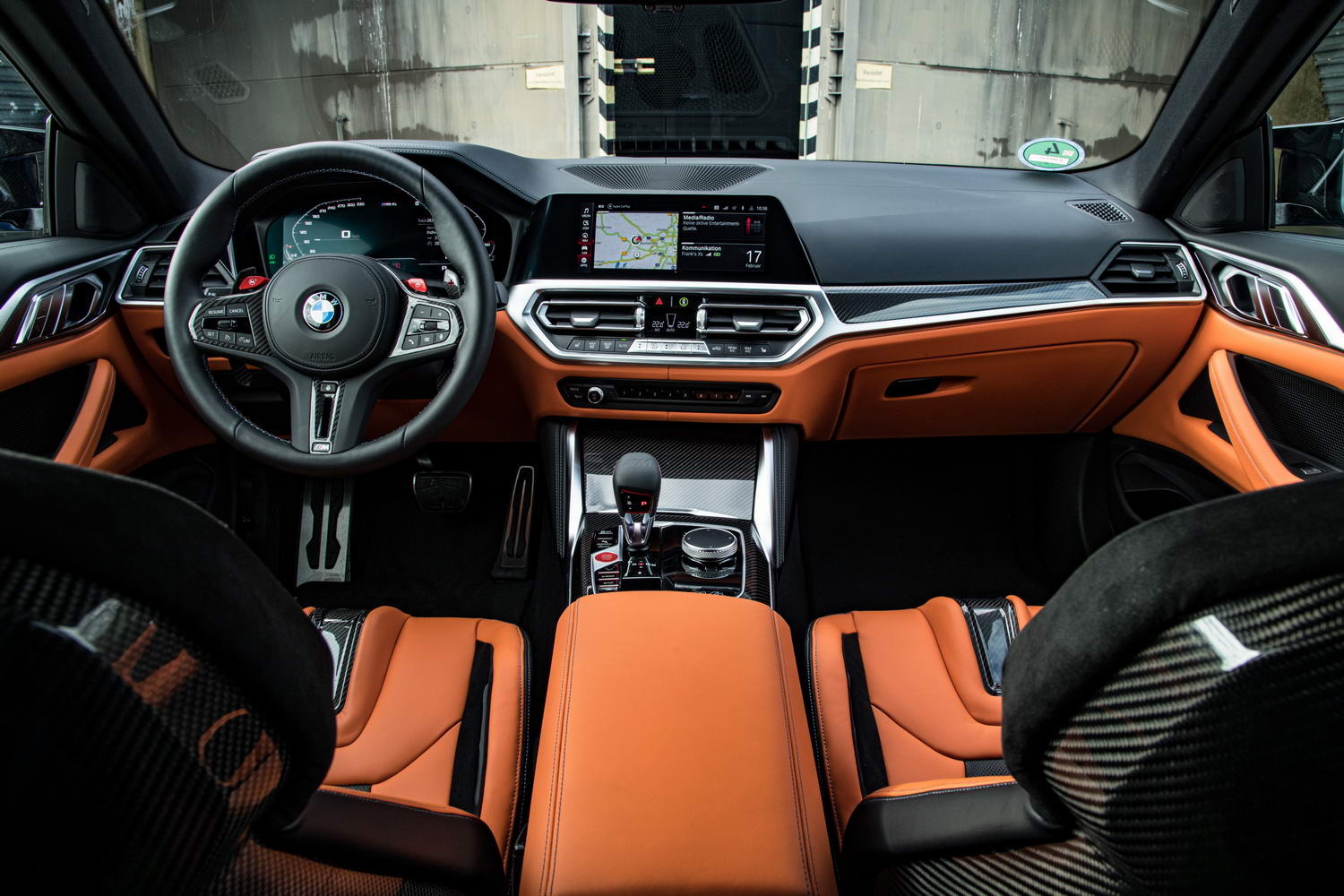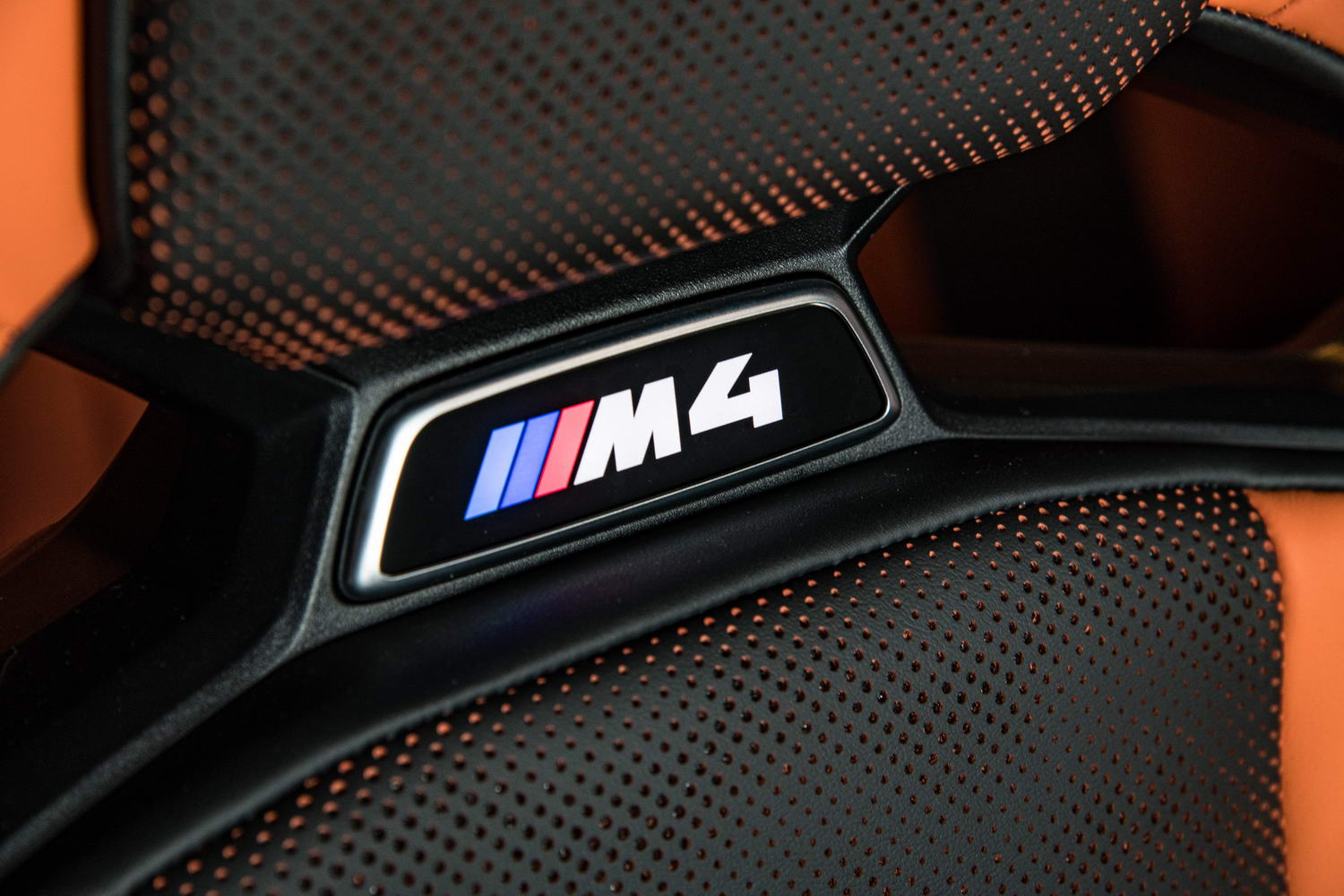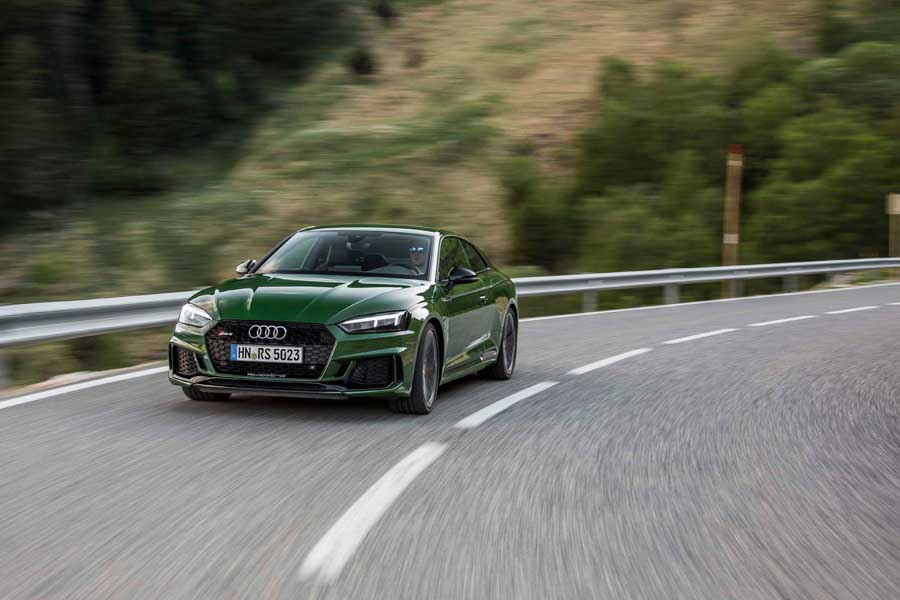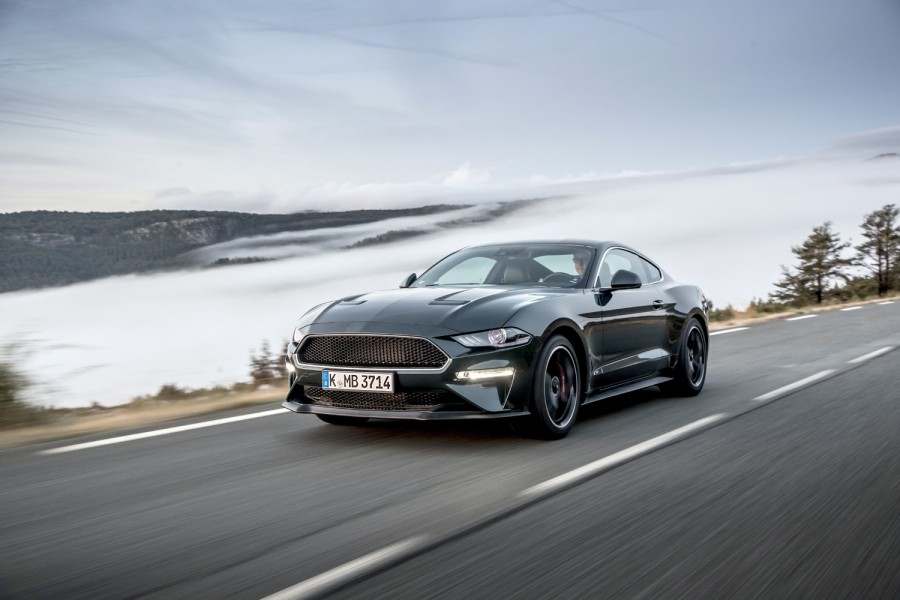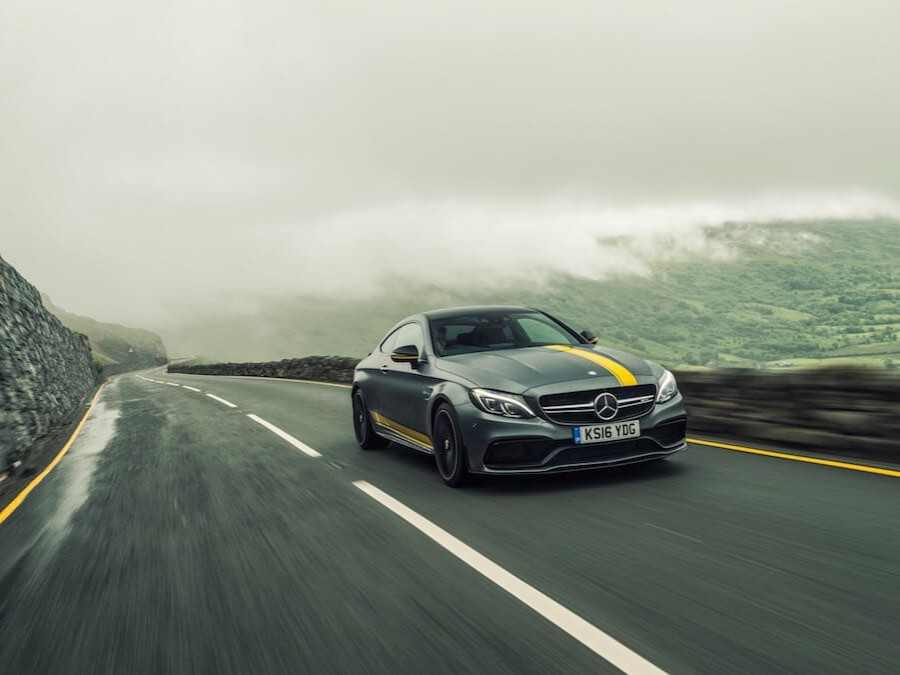Whether you're a BMW M devotee or not, the arrival of a new M car always grabs the attention of petrolheads, and they won't have missed the fact that there's a new M3/M4 pairing, potentially the last to use purely internal combustion power. Here we review the M4 Coupe in rear-drive Competition specification. Can something with such divisive design redeem itself with how it feels from behind the wheel?
In the metal
Few previous BMW M cars in the past have courted controversy like the new M4 Coupe. Its massive kidney grilles up front, restyled in comparison to those on the BMW 4 Series Coupe and more prominent as a result, are only the start of it. Look at the M4 from the side and it looks, well, too long. Somehow, despite wearing (admittedly stunning) 19-inch rims up front and 20-inch wheels at the back, it can sometimes look under-wheeled. That's partly to do with the long wheelbase, but also perhaps the amount of bodywork in the rear haunch.
In fairness, the direct rear view is full of promise, where the dainty LED lights are offset by a sliver of a carbon fibre spoiler and, of course, four exhaust outlets sticking through a diffuser, which you just know is as much about aerodynamic efficiency as it is design. A carbon roof and carbon door mirror caps also serve to distract the eyes, while there's an air outlet aft of the front wheels specific to the M4. Images don't quite portray how good the car's stance is in real life, however, so don't dismiss it until you've seen it for yourself. I prefer the shape of the M3 Saloon and you could always choose that instead, regardless of your seating needs.
That is unless you can't stand the sight of the massive grilles up front. For the record, I think the BMW M take on the design works well with the added aggression in the front-end styling. Nonetheless, this car is incredibly colour sensitive. One of the launch colours is São Paulo Yellow and though it grabs attention, it also flattens the surfacing. Make sure you see it in the metal before you go for that.
The interior of the M4 has more universal appeal, we'll wager, though, again, watch how you specify it. There are more colour and trim options than before, so don't go mad. One major consideration is whether to go for the carbon-backed buckets seats up front. They look gorgeous, undeniably, though they take some getting used to for everyday use. The side panels on the base are high and hard, while the big protrusion between your legs (I'm not making this up - scroll through the gallery) is also unyielding. Despite electric adjustment for the width, etc, these seats won't suit all body shapes and I suspect they'd become annoying if you're using your M4 for nothing more than everyday driving duties. Inarguably, though, if you do plan to drive your M4 as its engineers intended, preferably on a track, then go for these seats, as they hold you in place and make you feel more part of the car.
Ahead of the driver, we're pleased to see that BMW M is sticking to a perfectly round steering wheel and it's not as thick-rimmed as it used to be. It gets the familiar red M1 and M2 selection buttons and pleasingly long carbon fibre gearchange paddles behind, too. The all-digital instruments change appearance depending on whether you've selected Road, Sport or Track from the 'M Mode' menu, as does the head-up display.
The button for that is found on the redesigned centre console, above the 'SETUP' button (more of which in section below), another for the sports exhaust, a bright red engine-start button, the usual rotary iDrive controller and a stubby gear lever with an extra toggle switch on it to choose which gearbox setting you want. Meanwhile, there's plenty of lacquered carbon fibre trim around to remind you you've bought a sporty car with motorsport links and it all feels of exceedingly high quality.
Driving it
You can just jump into the BMW M4 and drive away, easy-peasy, no messing around with settings. It has the same torque converter automatic gearbox that the BMW M5 and others use, so it's smooth in traffic and as simple to operate as any other car in the range. Sure, the M4's straight-six makes a purposeful roar on start-up, but you can quieten it down by deactivating the sports exhaust if you wish.
We don't expect many owners to regularly reach for that, however, and neither do we expect many buyers of the M4 to drive it about in its default settings all the time. Press the SETUP button and an easy-to-use menu appears on the main touchscreen allowing any combination of the various options. For the engine, choose Efficient, Sport or Sport Plus. The 510hp straight-six under the bonnet responds with more noise as you move up the scale, along with sharper throttle response and added histrionics in the exhaust on the overrun. Choose Sport Plus and it's actually a tad too responsive to changes in the accelerator position to allow for smooth stop-start traffic, but once you've driven it in that setting at pace, you won't want to change it back.
Next up is the adaptive damping, labelled "Chassis" in the setup menu. Again, you have three options, this time titled Comfort, Sport and Sport Plus. Our drive of the M4 took in a section of motorway, a short stretch on urban roads and then a lot of challenging mountain roads here in Ireland. Alarmingly, even in Comfort mode, the car felt too stiff by far at first. At low speeds and small changes in the suspension movement, there is very little give in the suspension, making it feel uncompromised. The sidewalls of the low-profile tyres obviously don't help, and the lightly padded buckets seats probably emphasise it all.
Nonetheless, things improve immeasurably with speed. Sure, the tyres thump loudly over cat's eyes as you change lane on the motorway, but otherwise it's remarkably civilised at a cruise. Wind roar is kept in check, though road noise from the wide tyres is quite sensitive to the surface roughness. Still, it could be perfectly acceptable to cover larger distances in. If you had to.
We did experiment with the Sport and Sport Plus settings when on the mountain roads, too, though they just made the M4 uncomfortable without enhancing body control in a useful manner. These roads are particularly bumpy, I should add, and it was raining heavily. Notably, in Comfort mode, the car coped commendably well with the conditions and road surface. Despite the high-performance tyres optimised for warmer, drier weather, the level of grip on offer is outstandingly high, allowing you lean on the car and trust it.
The thing is, you don't need blind trust in the M4, as it telegraphs what's going on at road level through the excellent steering system. While the nose darts into the apex as quickly as you can turn the steering wheel, it also lets you know how much grip there is available. Not only that, but you can also feel the rear end coming into play early on. And it's wonderfully communicated, allowing you adjust the cornering line or attitude with subtle throttle inputs. The Active M Differential operating on the rear axle is simply brilliant at its job, helping find traction while making the experience from the driver's point of view hugely satisfying.
There are Comfort and Sport settings for the power steering, too, though I don't like the artificially heavy feel of the latter mode. Each to their own. Likewise, as in the M8, I didn't think that the two-stage brake system was worth altering. Perhaps on track there would be a more obvious different between the Comfort and Sport settings. Our test car featured standard brakes, incidentally, with a perfectly modulated brake pedal and no issues coping with our 'enthusiastic' driving.
And it's on track where a new addition to the M car customisation suite should come in particularly handy. There's been a three-stage traction control system in BMW M cars for quite some time now, but the new M3 and M4 debut a 10-stage option. You must hold down the DSC (Dynamic Stability Control) button first to disable it before you can choose from the 10 levels, depending on your skill level, confidence and the conditions. Speaking of which, when you do turn off the DSC, an option pops up on the screen title "Start M Drift Analyser". It does exactly what it says.
A variable traction control system makes a lot of sense as the M4's performance has been increased once more. Don't focus on the peak power figure, though, as this car's ferocious any-gear acceleration comes courtesy of its 650Nm of torque. That's produced from 2,750rpm to 5,500rpm and it results in eye-widening go, much more than anyone needs for the public road. Even in the laziest of the three transmission settings it gathers pace unrelentingly.
Those serious engine outputs mean you need to have your wits about you to get the most out of the M4. Thankfully, it's rather well-sorted. Even though you feel like you're an integral part of the operation, it's also more forgiving than its predecessor ever was. It has all of that car's excitement and edginess, but it's somehow a tad more accessible. Don't for a minute think that means it's something that all drivers will like, though. This car is for those that want to drive and are willing to put in the effort. Long may it be so.
What you get for your money
The M4 is a little more expensive than its four-door M3 Saloon sibling, but the difference is likely to be irrelevant once a few options are added. At about €125,000, the M4 Coupe is an expensive car, though, when you look around for alternatives, it begins to look like relatively good value. In reality, it offers the driving experience of much more expensive Porsches and Aston Martins, for the price of rivals that are, for the most part, not quite as special. For now, the M4 is offered in Ireland only in Competition specification, which means a huge amount of standard equipment. It will eventually be available with xDrive all-wheel drive, too.
It's a shame that the regular, non-Competition, M4 won't make it to these shores. It gets a manual gearbox as standard and a slightly less speed-focused suspension setup on smaller wheels, which might make it perfect for Irish roads. Still, if neither the M4 Coupe nor the M3 Saloon float your boat, the first ever BMW M3 Touring is promised to hit the market in 2022...
Summary
With an increase in performance and technical sophistication, and no real focus on reducing weight, there was a fear that the BMW M4 was edging ever closer in character to its big brothers, the M8 and M5. However, in rear-drive Competition spec at least, it's clear to us that the M4 is a focused sports car more than a GT that is trying to do it all. By its very nature, it won't appeal to all drivers (and let's not talk about the divisive styling elements again), but those that do love to drive will find a car that's breathtakingly capable on one hand, and yet incredibly engaging on the other. It gets under your skin, like all the best BMW M cars yet.

